Michael and I walked around Palma on the 26th. It is such an eclectic and historic city with interesting architecture and an energetic vibe. We wanted to experience more of it.
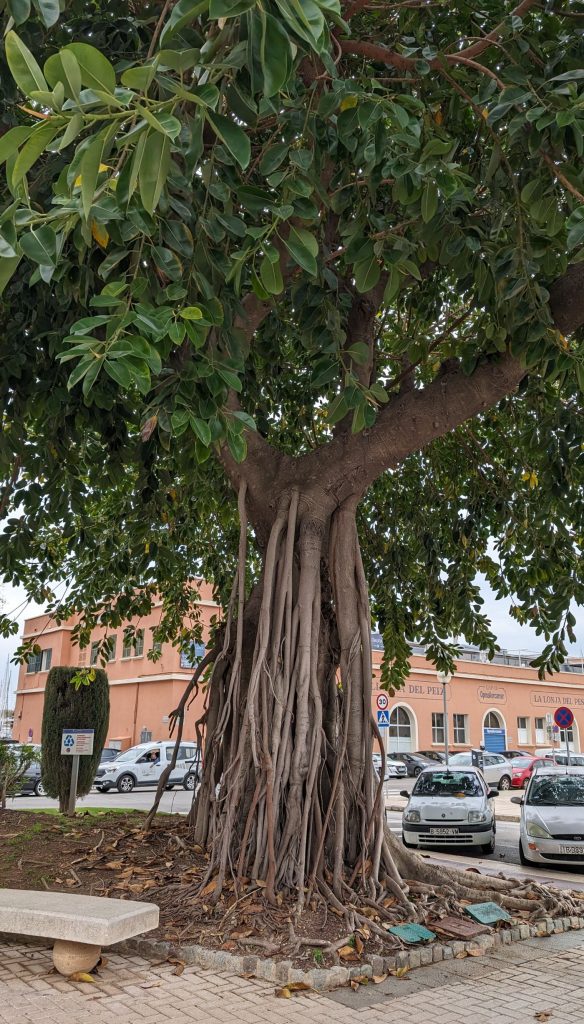
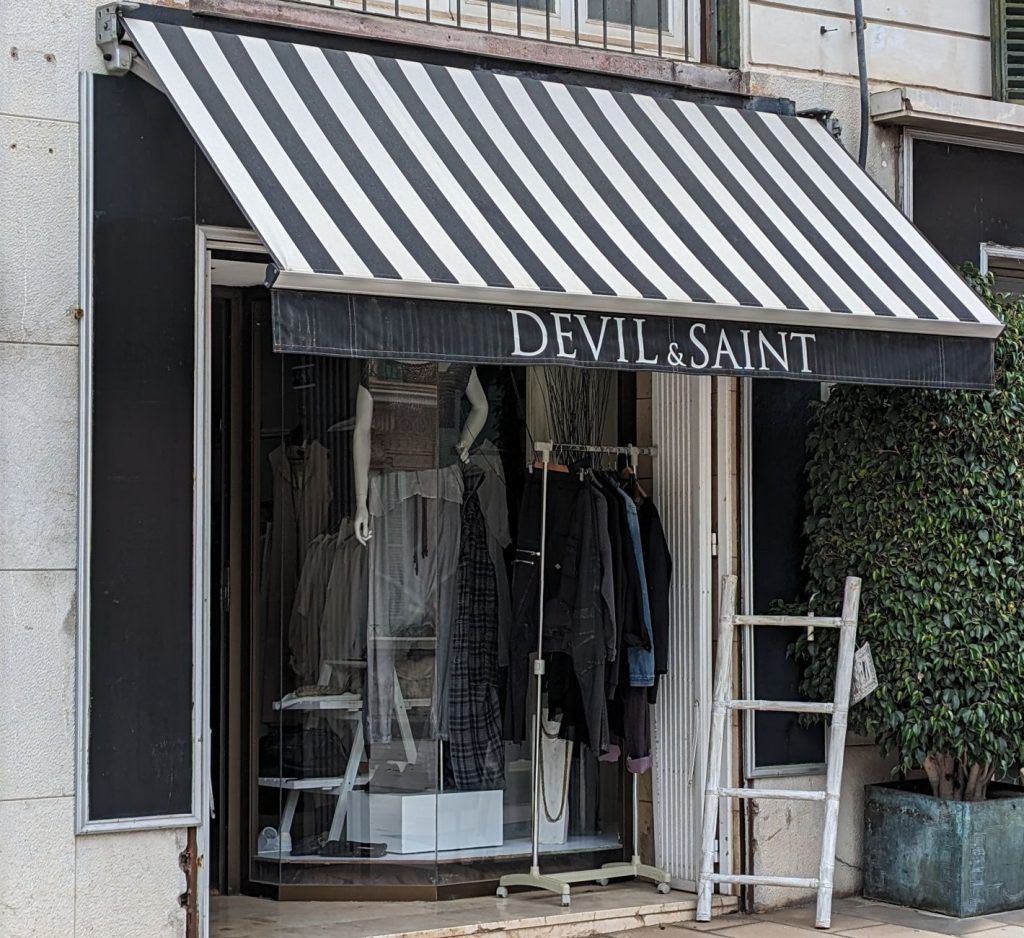
The two buildings pictured below, Can Forteza Rey and El Águila, located in Plaza del Marqués del Palmer in Palma, were probably our favorites. They are so closely linked that they seem to be one building. They represent different examples of modernist architecture.
Can Forteza Rey was designed by modernist jeweler Lluís Forteza-Rey. It is an example of Modernist-Art Nouveau architecture. The building’s facade is decorated in the same style as its interior, and shows a strong influence from Catalan Modernism, especially the works of Gaudí. The building dates from 1909 and it was assigned to family housing. The façade is decorated with trencadís (a Gaudi inspired kind of broken mosaic tile) and has twisted iron railings, as well as a stone grotesque under the bay windows. Another interesting feature are the traditional Majorcan shutters with their less than traditional shape. It is now occupied by a dental office and other businesses.
The building of El Águila was built in 1908 by architect Gaspar Bonasera in the art Deco style – an eclectic style which is a synthesis of modernism and Neoclassicism. On the facade are balconies with wavy iron railings, polychrome ceramics, and an abundance of vegetable items. The El Águila building offers a beautiful solution to the structural need to create large bays and meet the commercial demand that it was created for. The geometric iron structure with oversized rivets on the first floor, evolves into vegetal shapes on the upper railings and presents a sharp contrast to the multi-colored ceramic and decorative rounded arch that finish off the building.
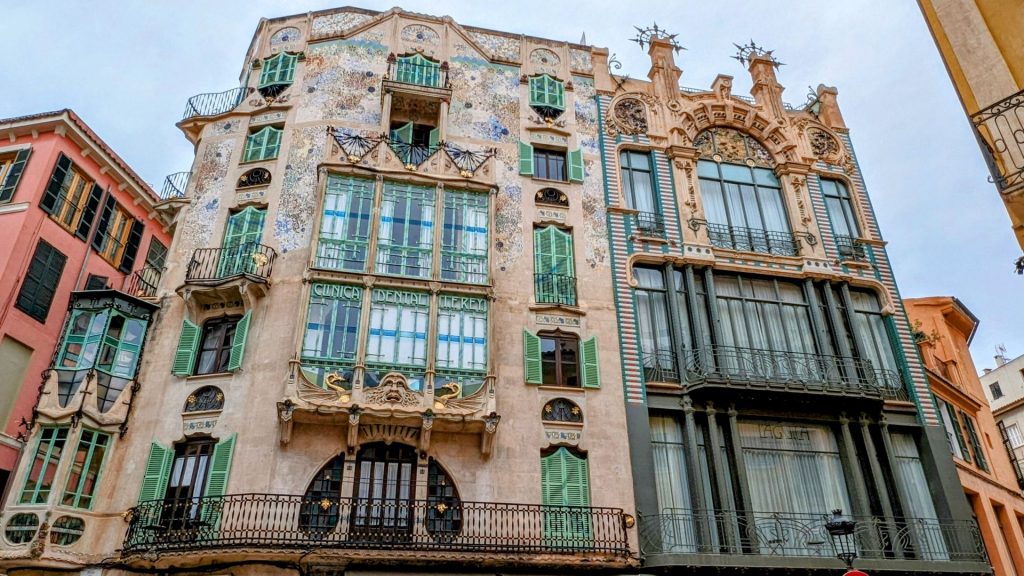
When I sent this picture to Heather, she replied, “Makes me want to go to the dentist.” She’s a funny one, she is! 🙂 🙂
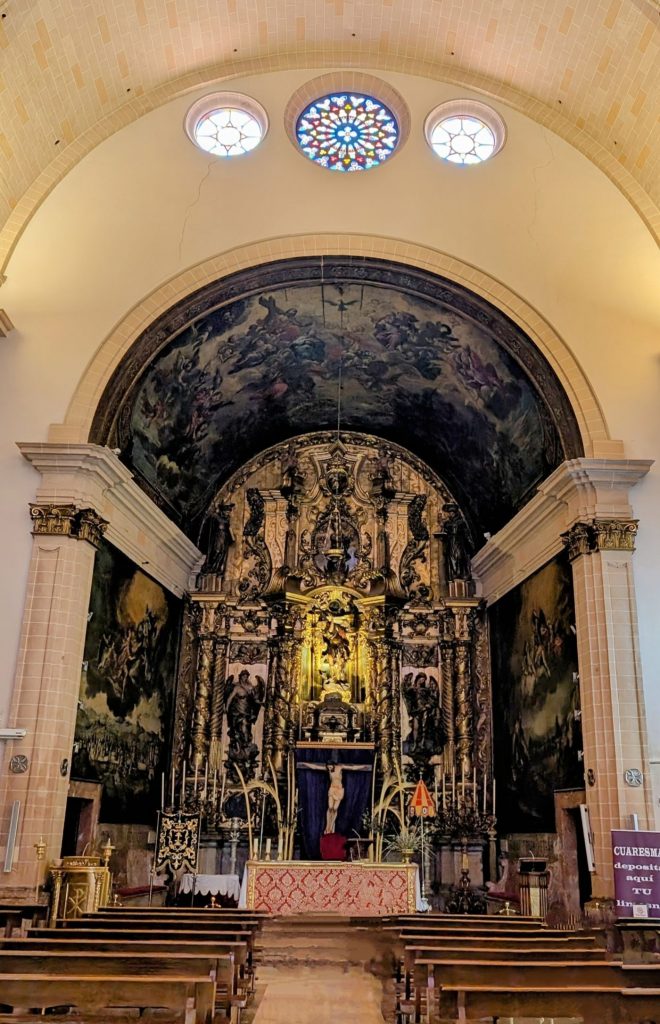
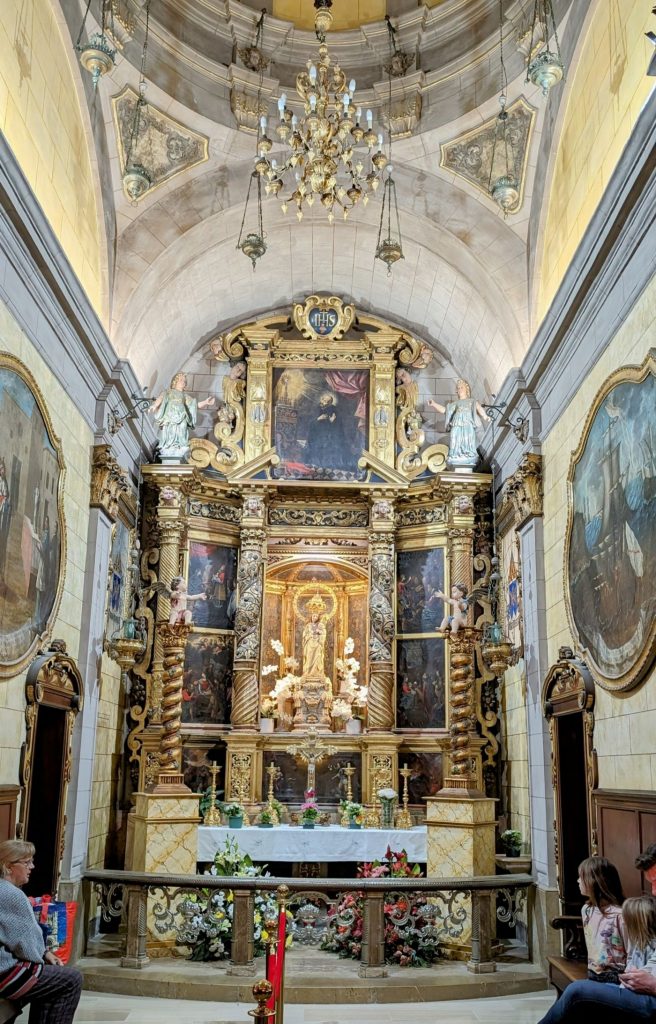
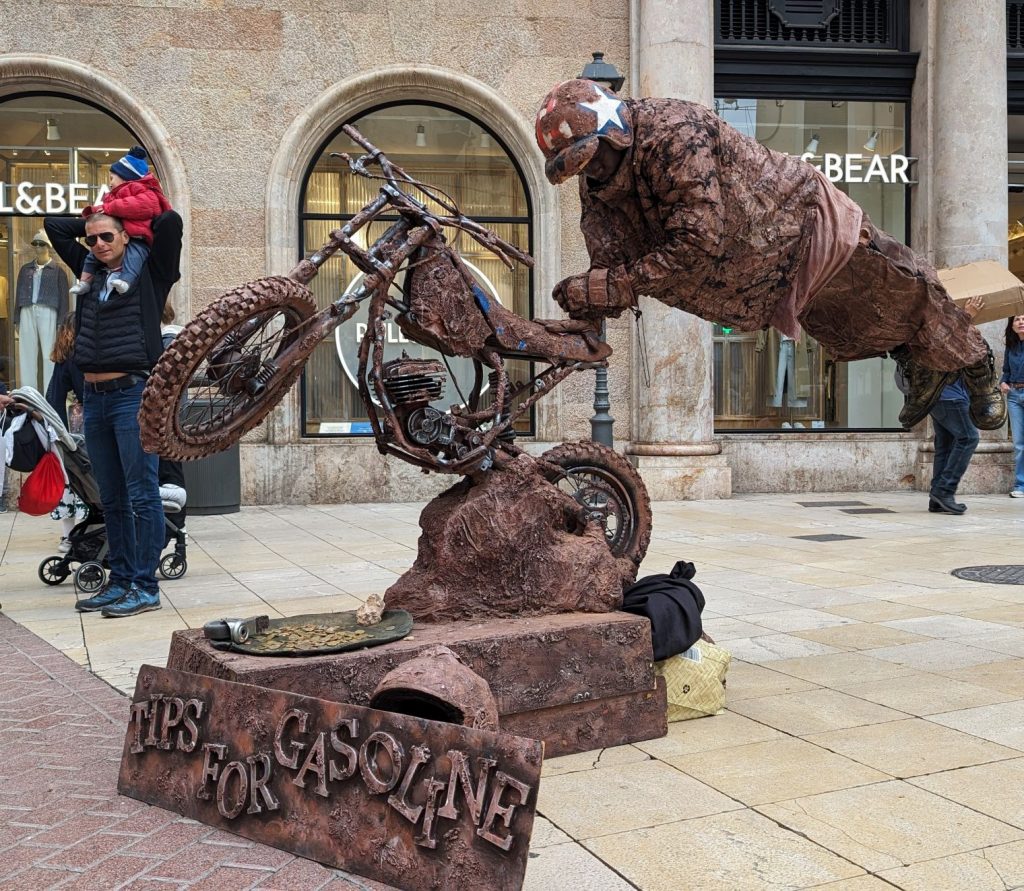
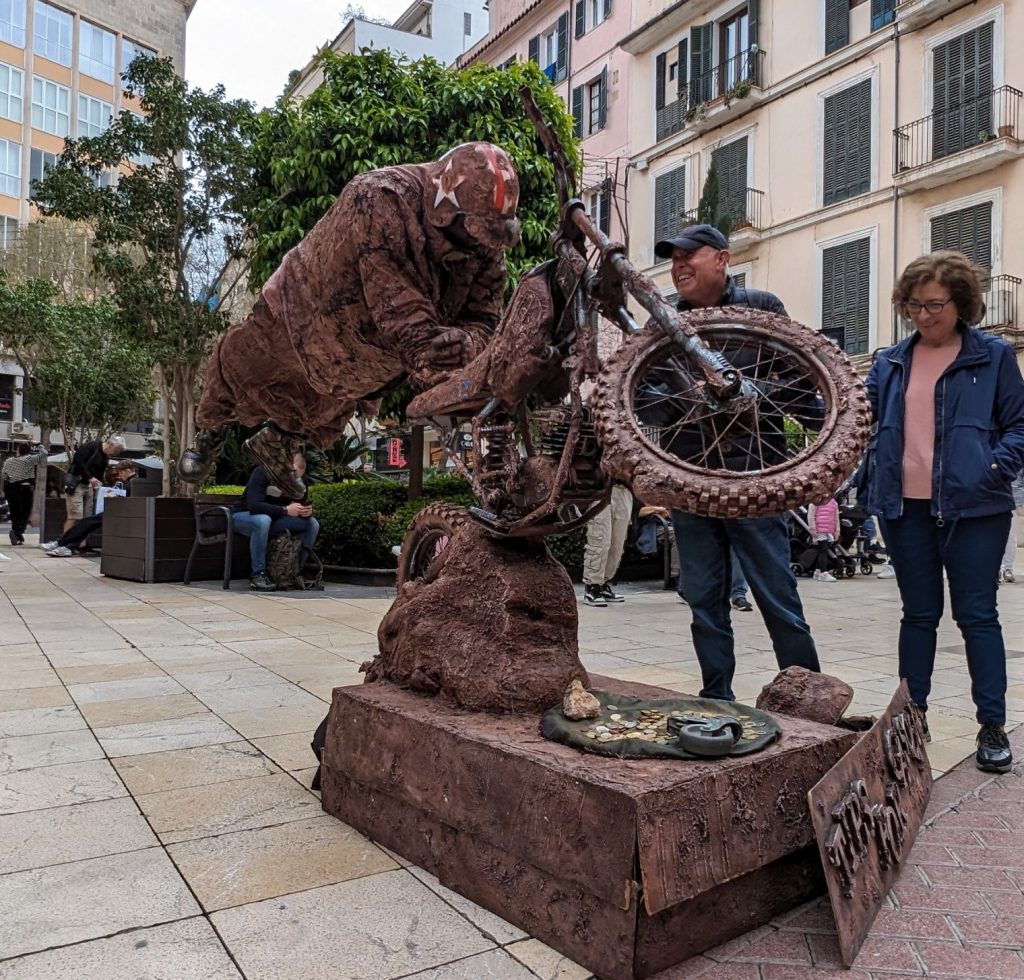
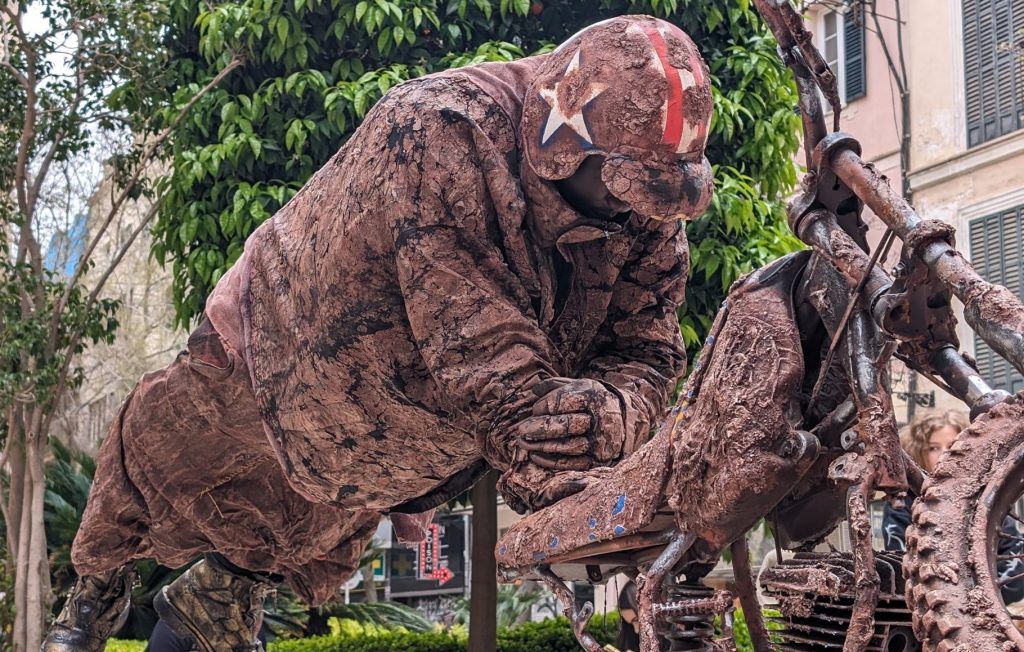
Unlike the one above, this next one is not a real person. This statue, located in the Spain Square in Palma, is of James I, 13th century king of Aragon, aka the Conqueror. James took Mallorca from Aba Yahya, the Almohad governor, on September 5, 1229. The bronze statue of James, mounted on his steed, was made by sculptor Enrique Claraso y Daudi.
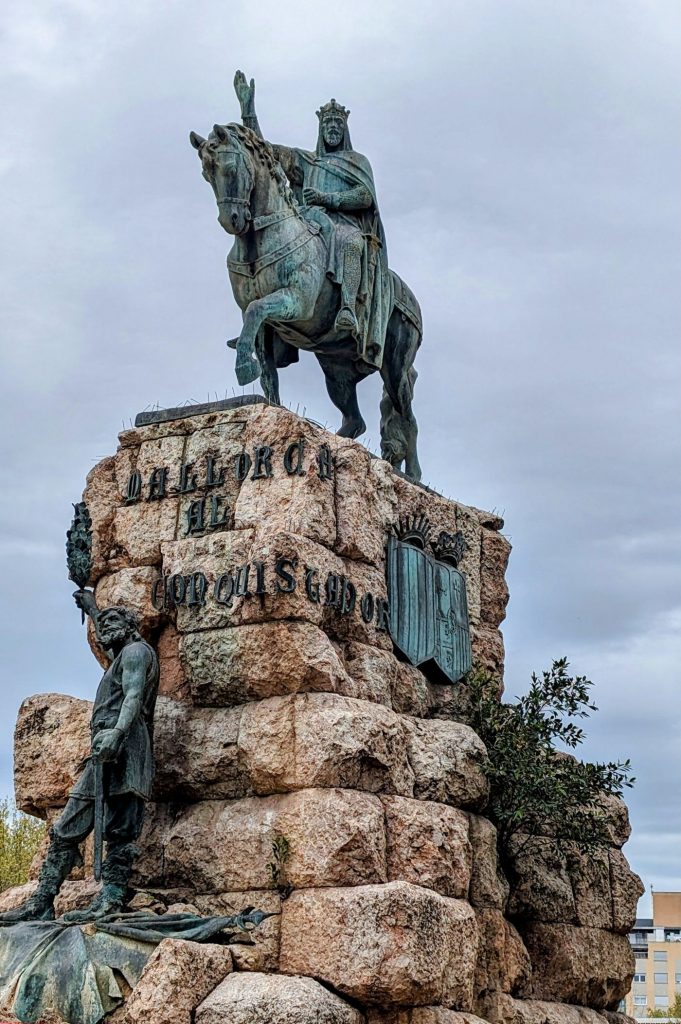
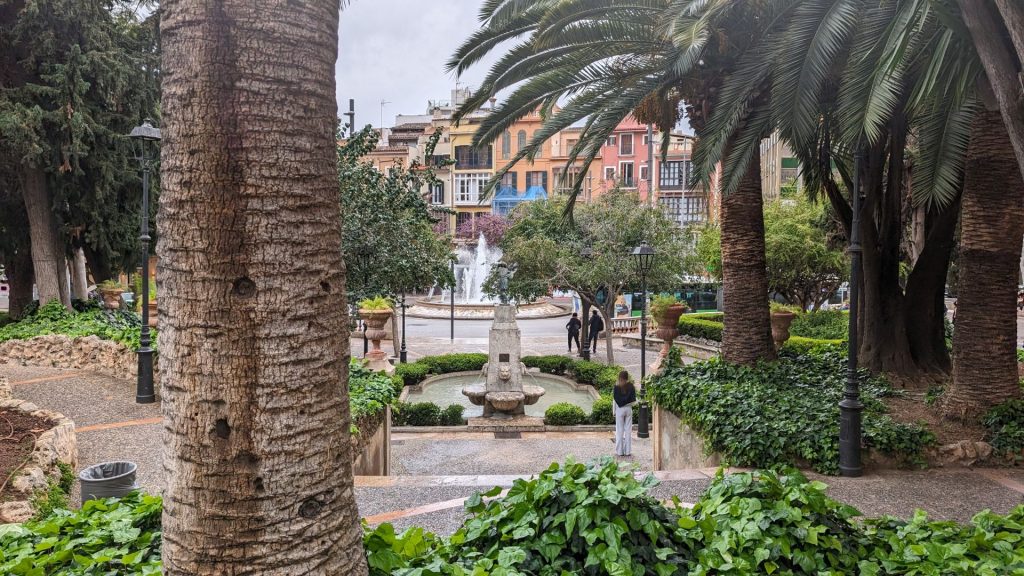
The next day was Wednesday, March 27th, and we had a big day planned. We walked to the Sóller train station, then took the 100-year-old train to Sóller. We then took the 111-year-old tram to the Port of Sóller.
The Sóller train itself was pretty amazing! It has retained the same appearance since its inauguration, thanks to the continuous care and craftsmanship it has received over the years. You enter the interior through a glass door and see floor, walls and ceiling of lacquered wood; sash windows, gilded sconces and leather and metal seats.
The train starts in Palma. After traveling through the city and suburbs, you see a variety of sights: carob and almond trees, centuries-old olive trees, mountains, valleys, orange and lemon groves, pine forests, and more.
The train goes through 13 tunnels, drilled to save the rugged geography. The longest one is almost three kilometers. When you go through a tunnel, the lamps are lit inside the wagons; outside, it is pitch dark. Pushed by the plunger that makes up the convoy, the air howls like a ghost trapped inside the mountain. When you open your window, a humid breeze, with the smell of moss and fern, blows cold, while the blackened walls of the tunnel slide swiftly a few centimeters from your face.
Here are some pictures of and from the train.
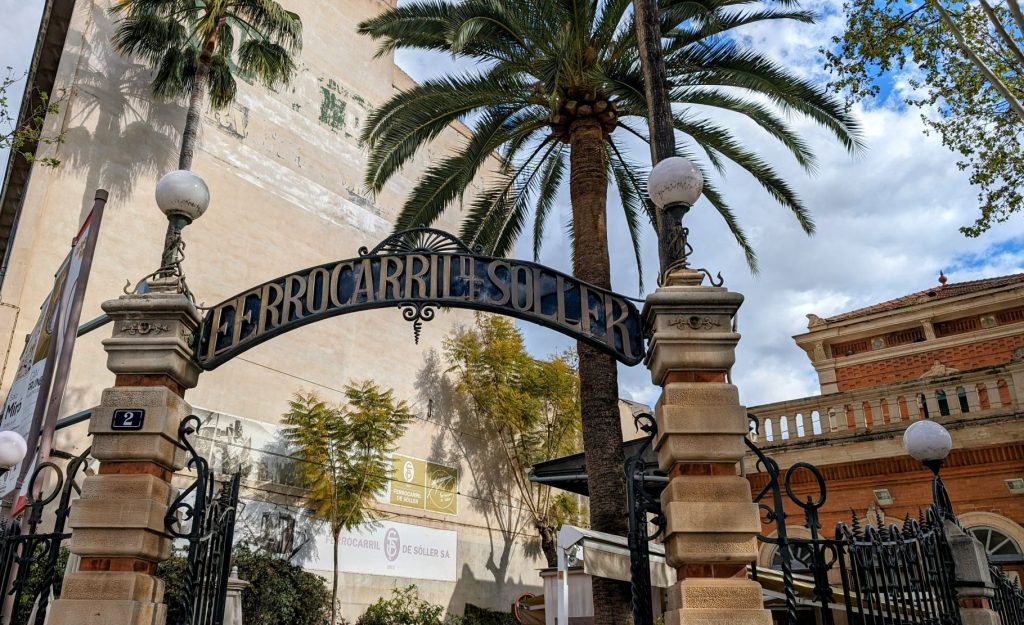
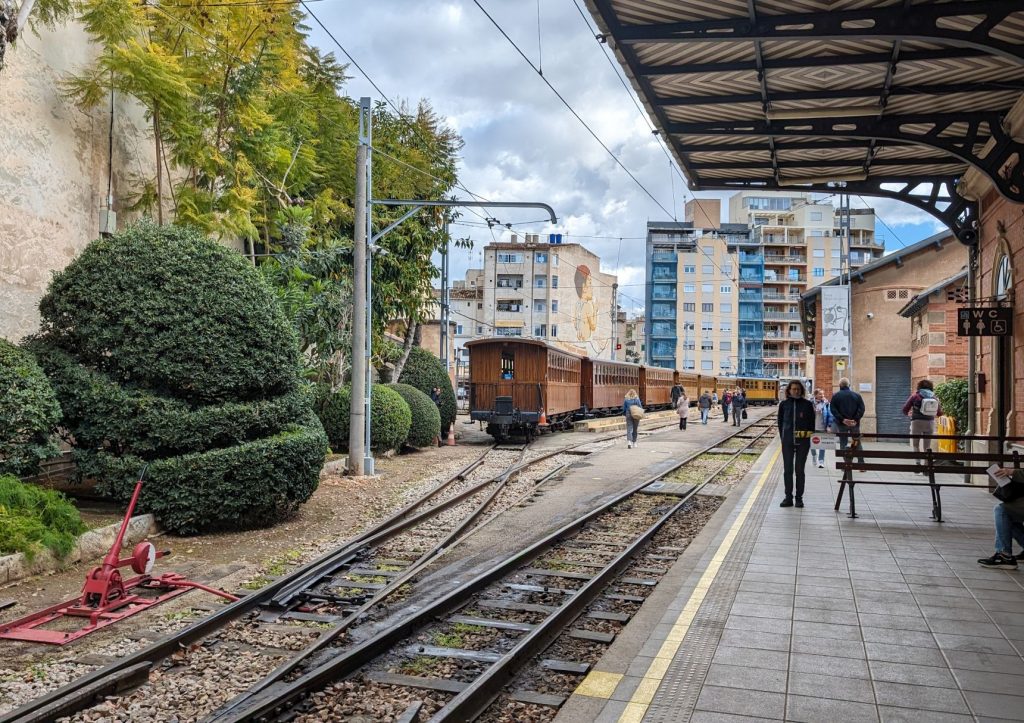
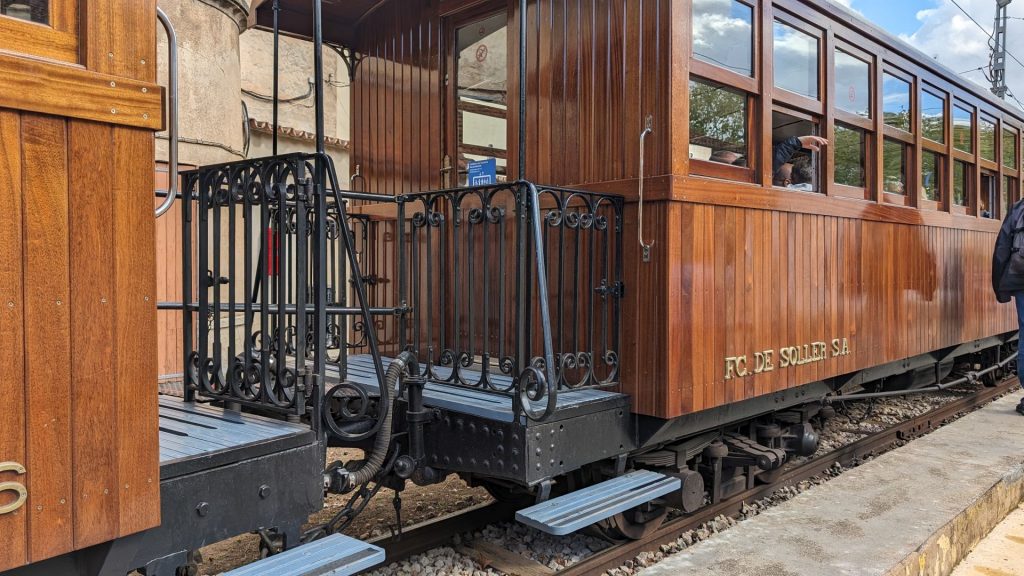
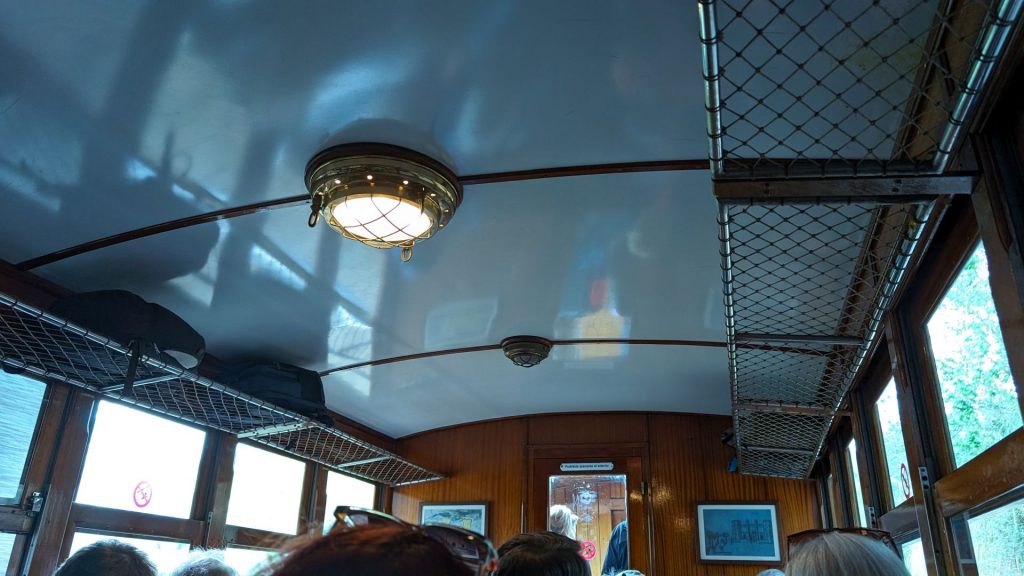
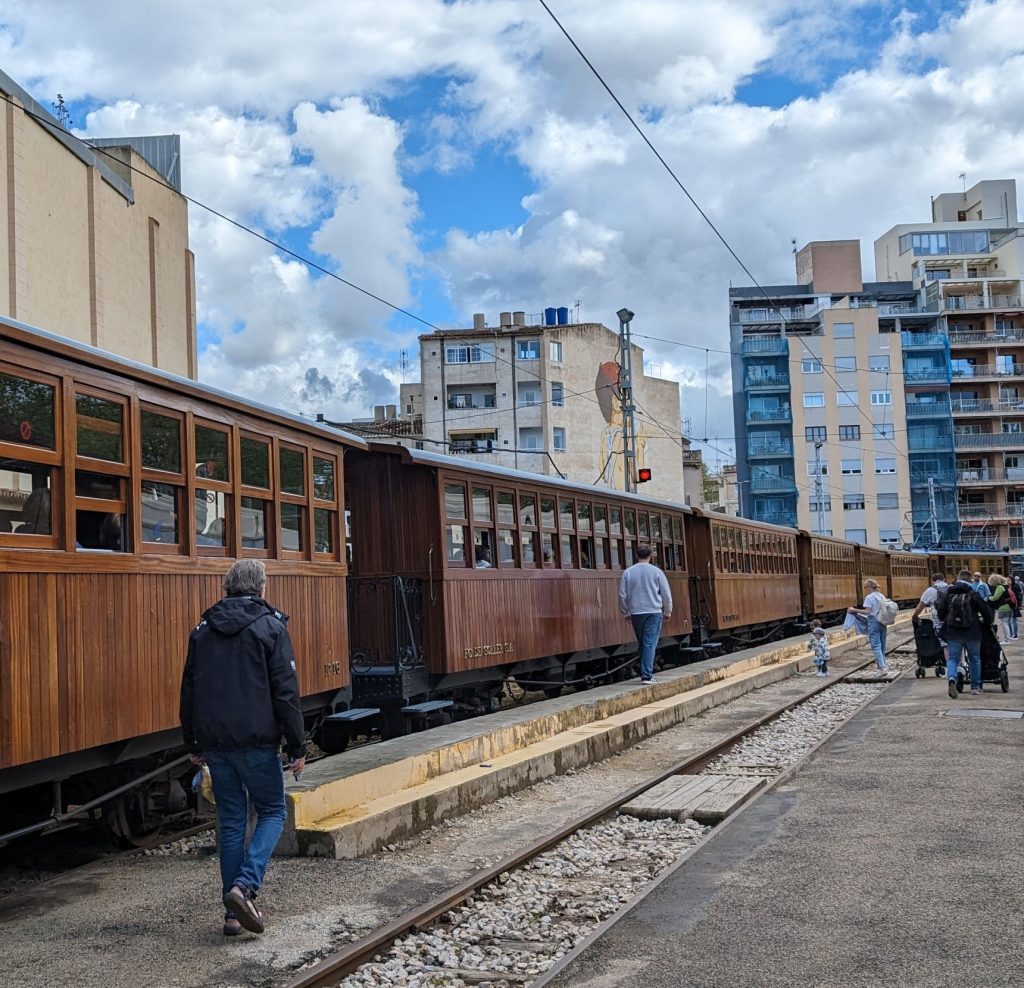
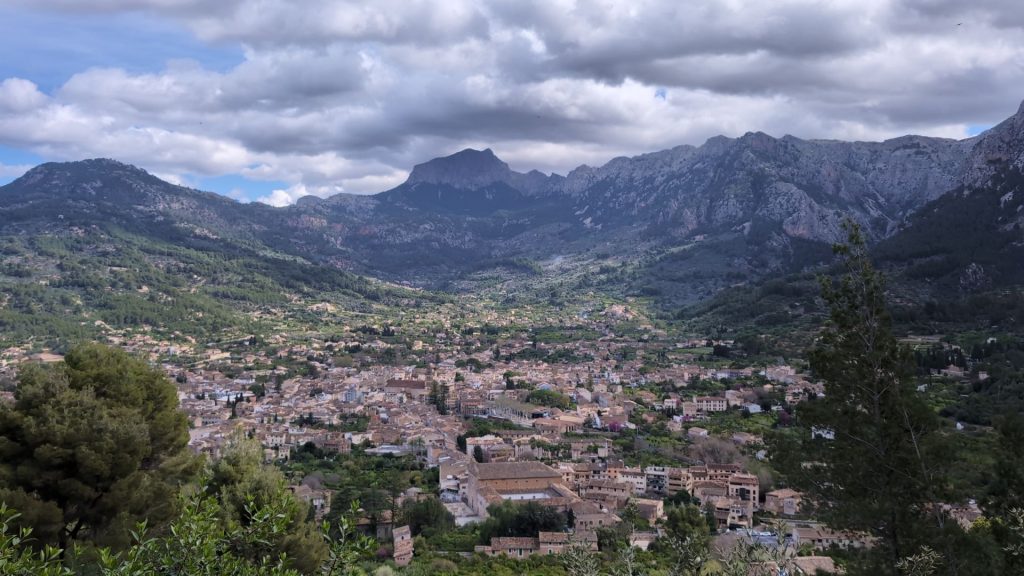
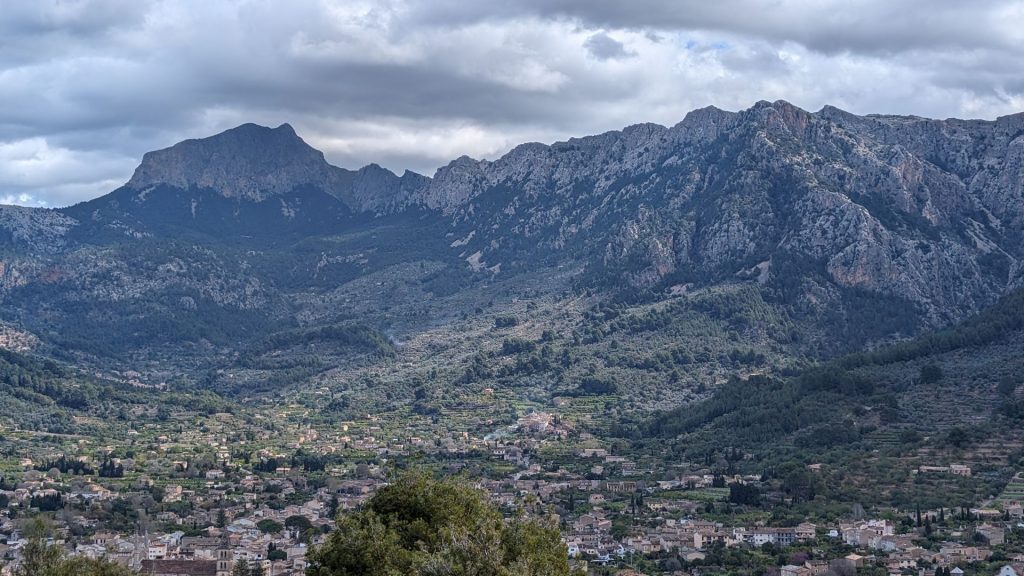
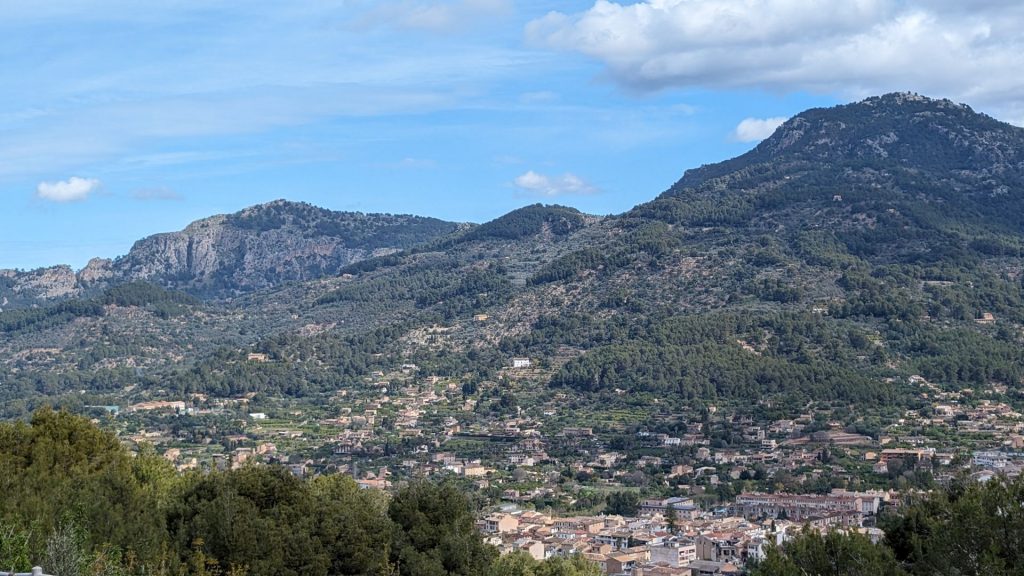
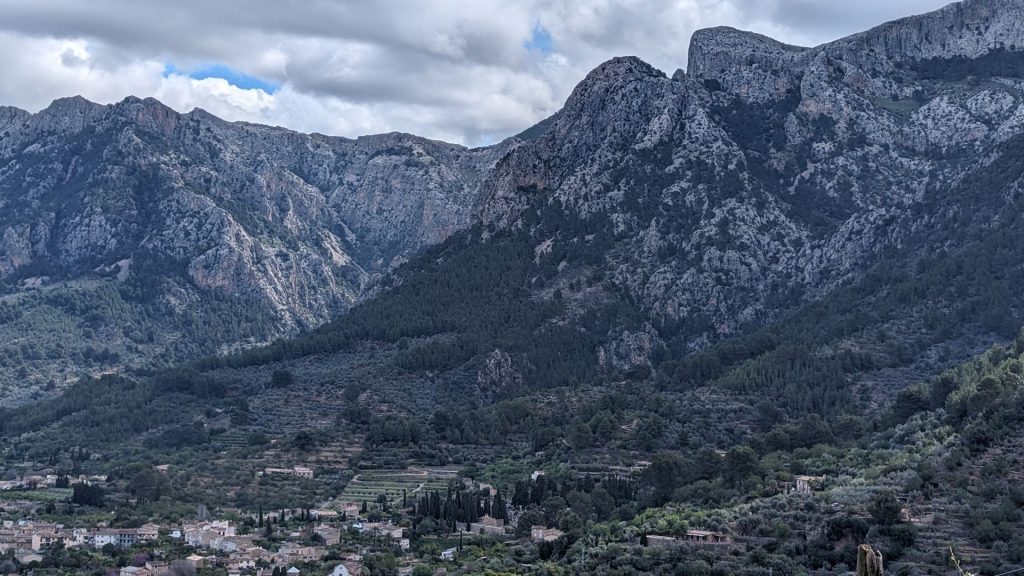
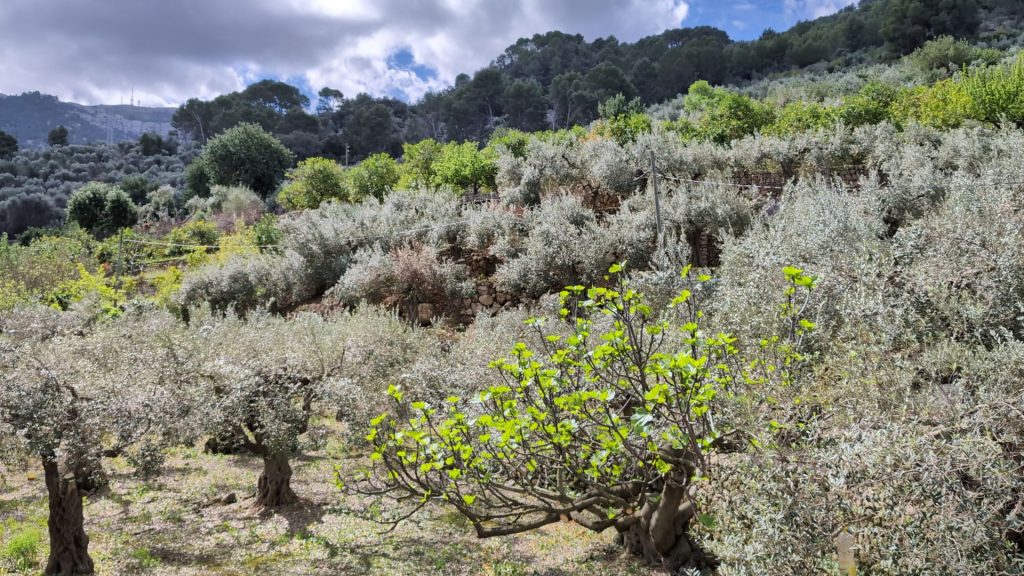
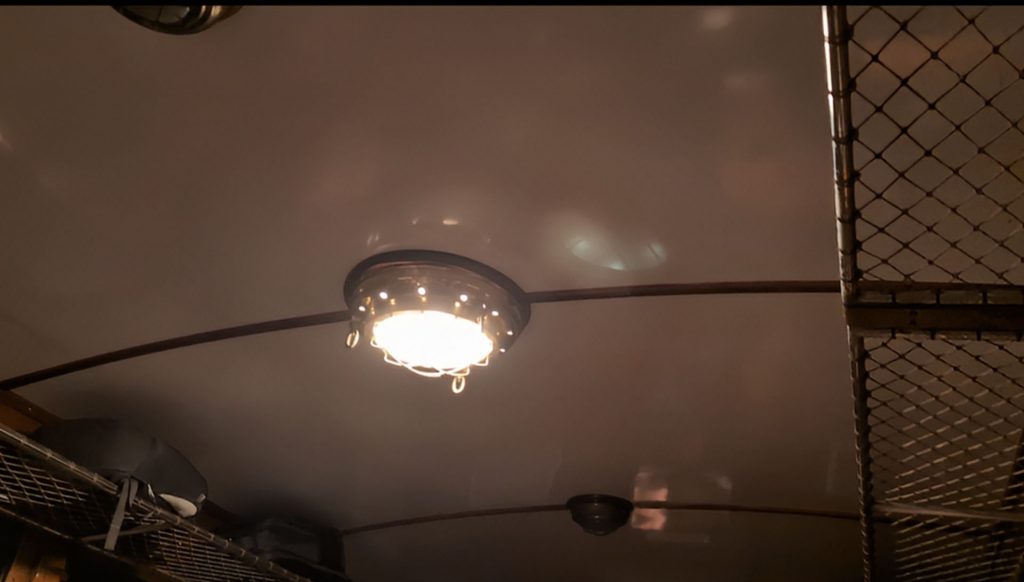
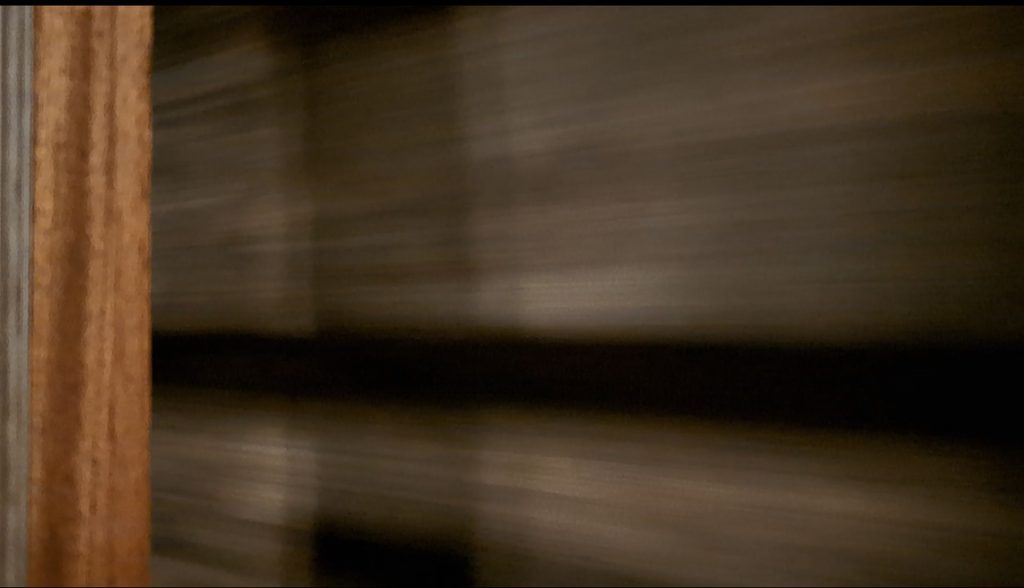
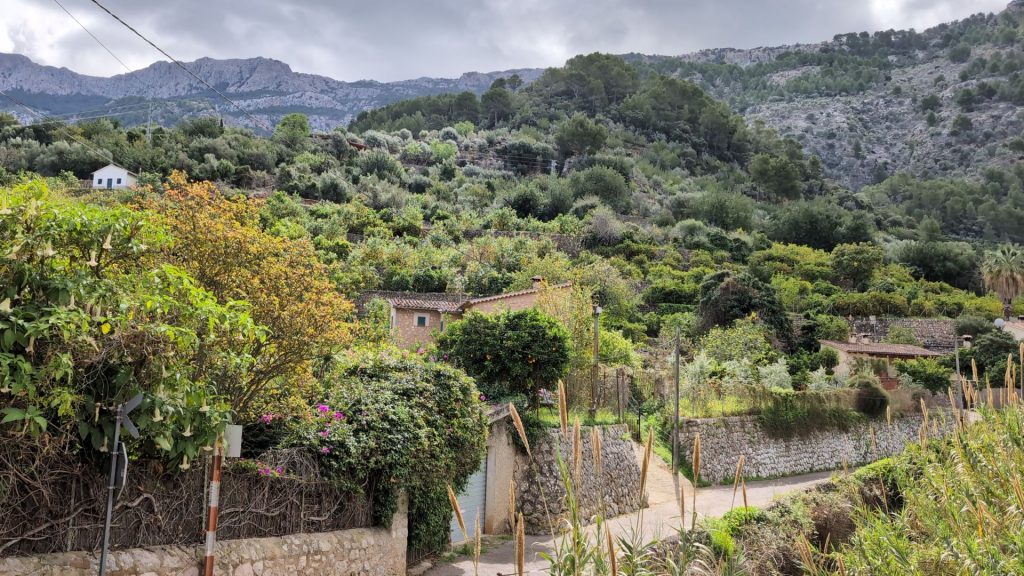
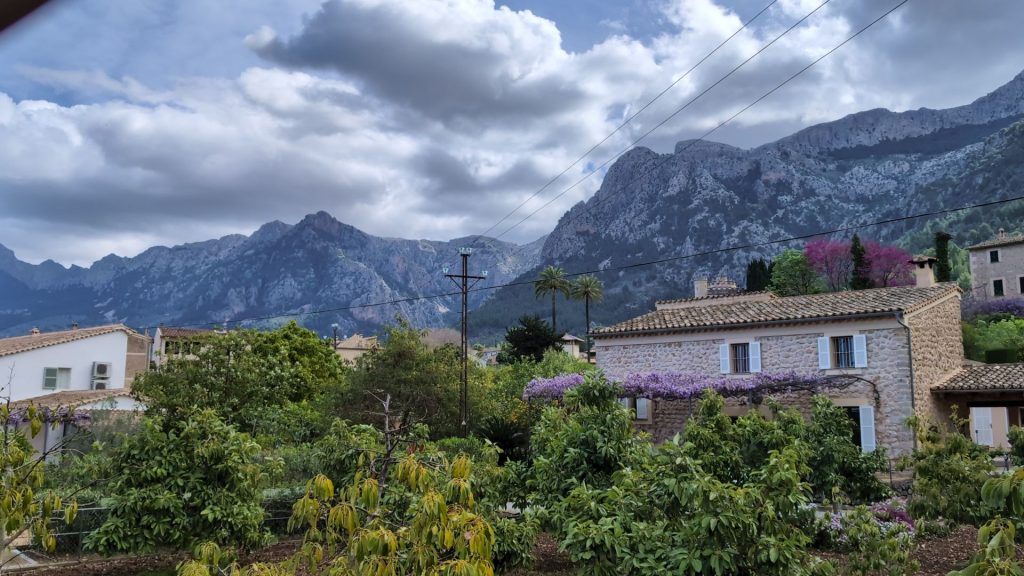
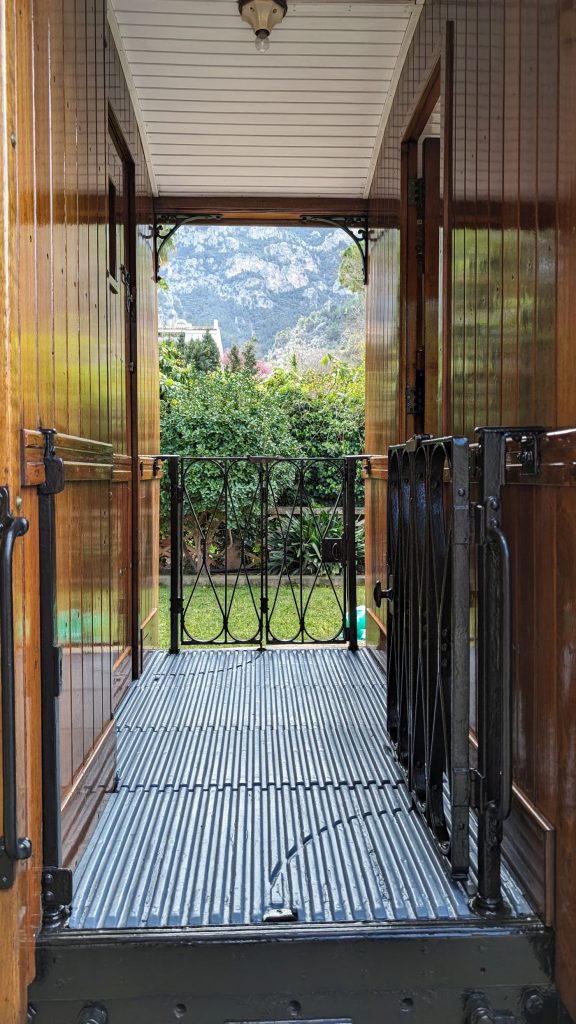
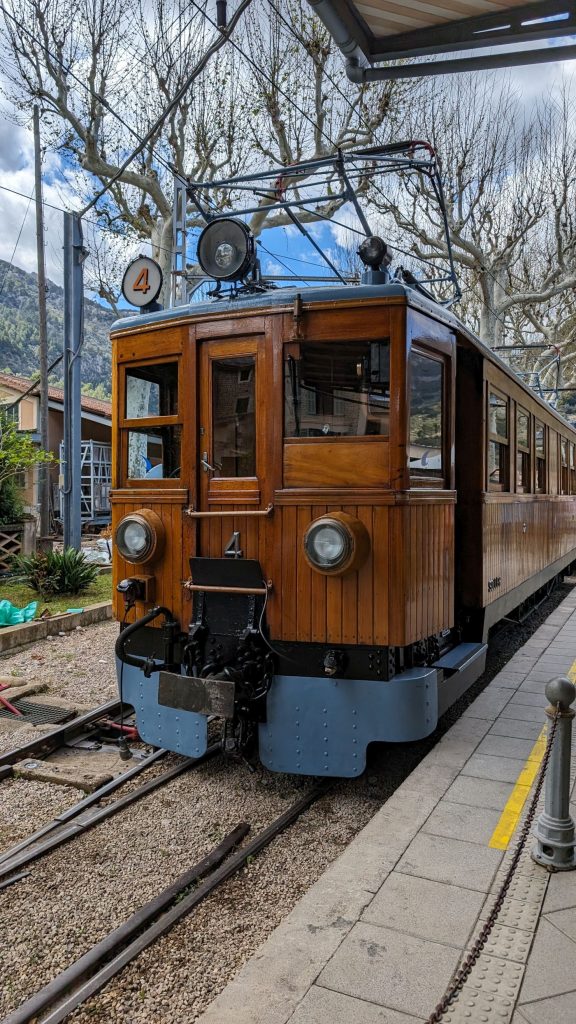
We have now reached Sóller. We walked around a bit and took a few pictures, then we took the 111-year-old tram to the Port of Sóller.
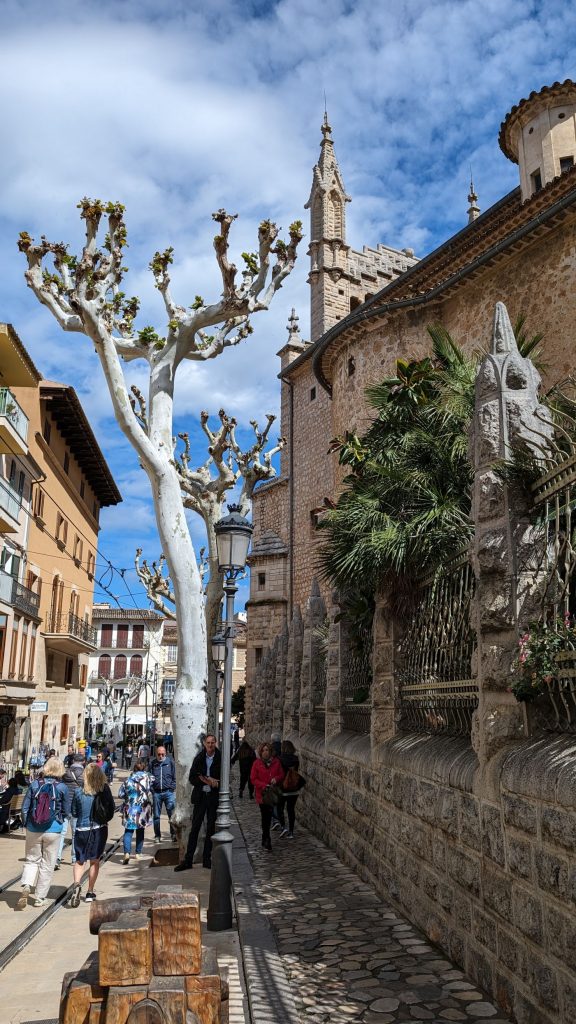
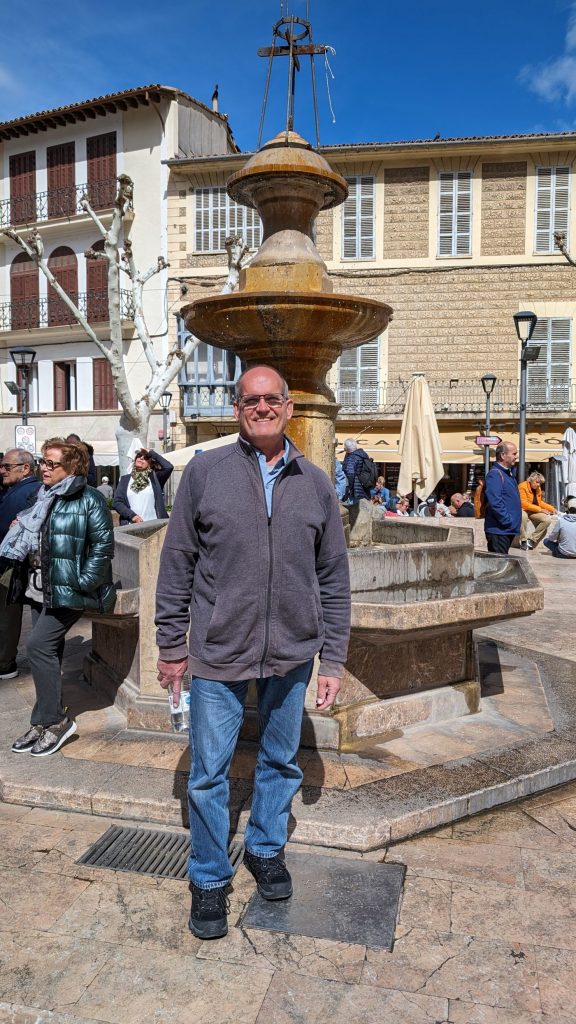
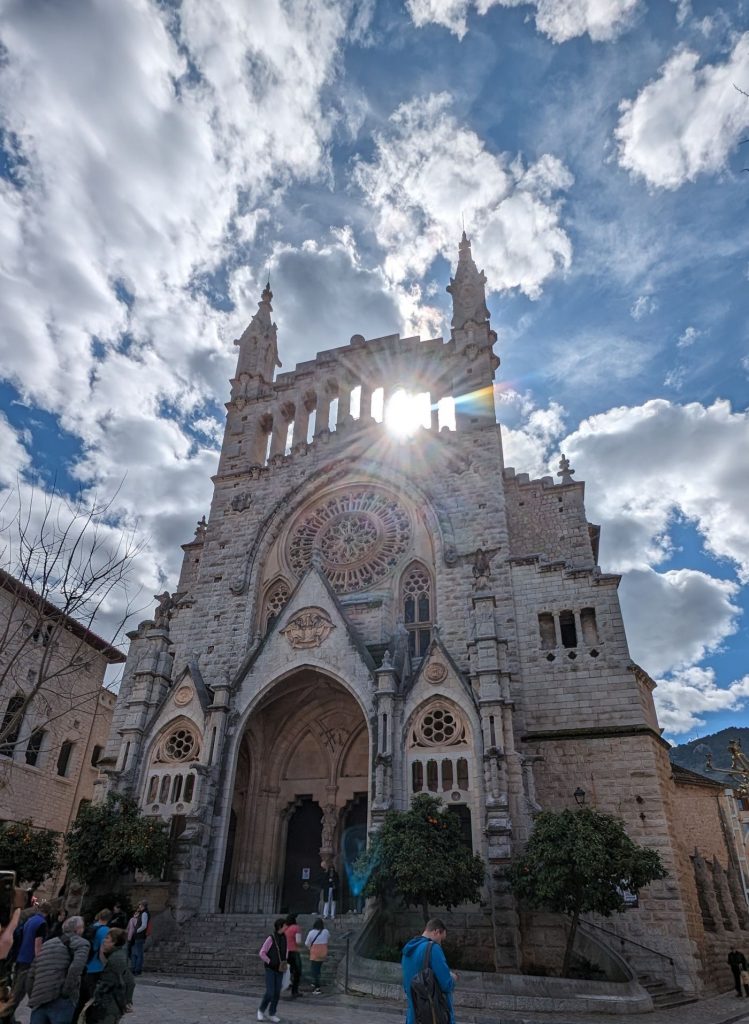
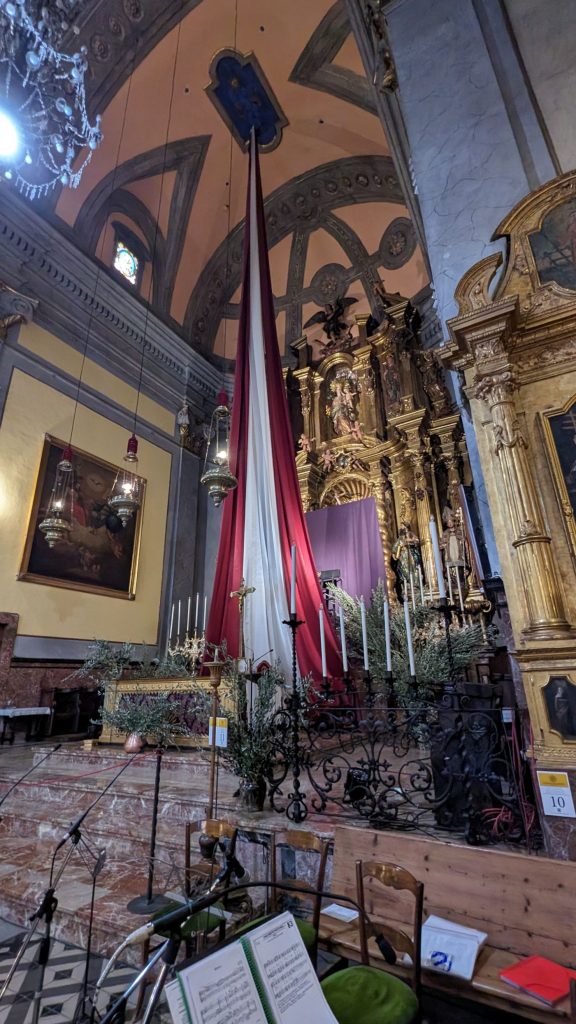
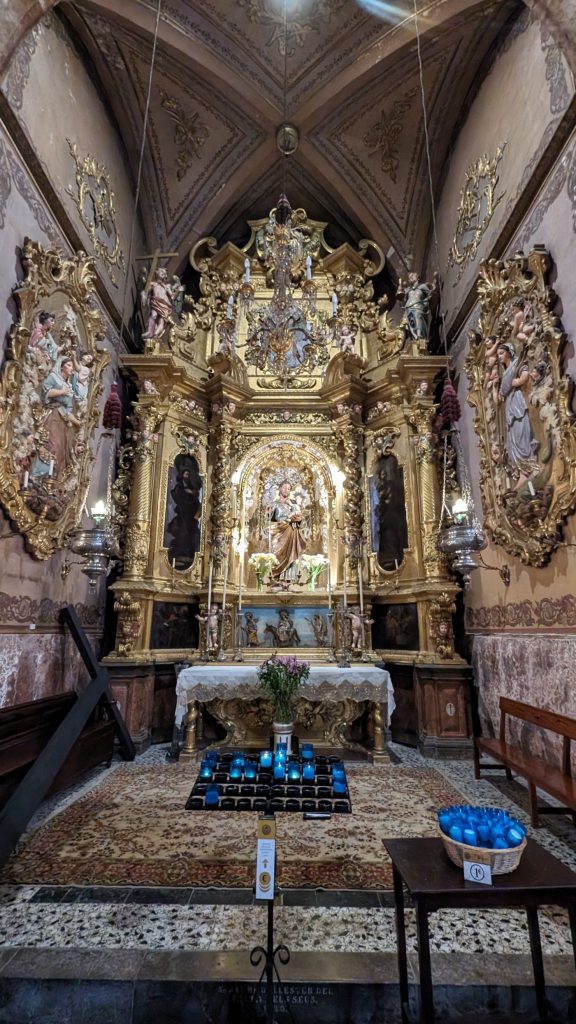
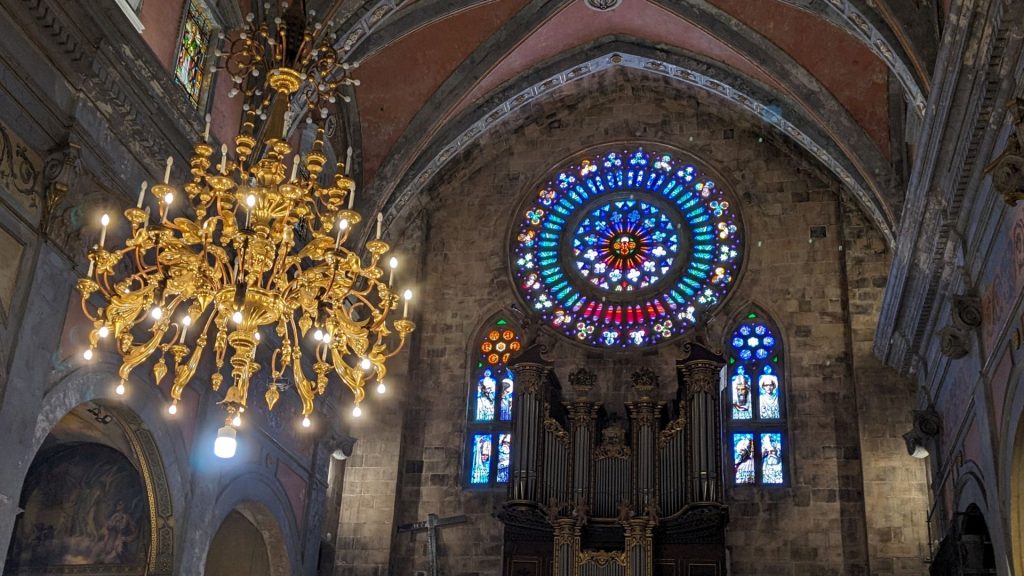
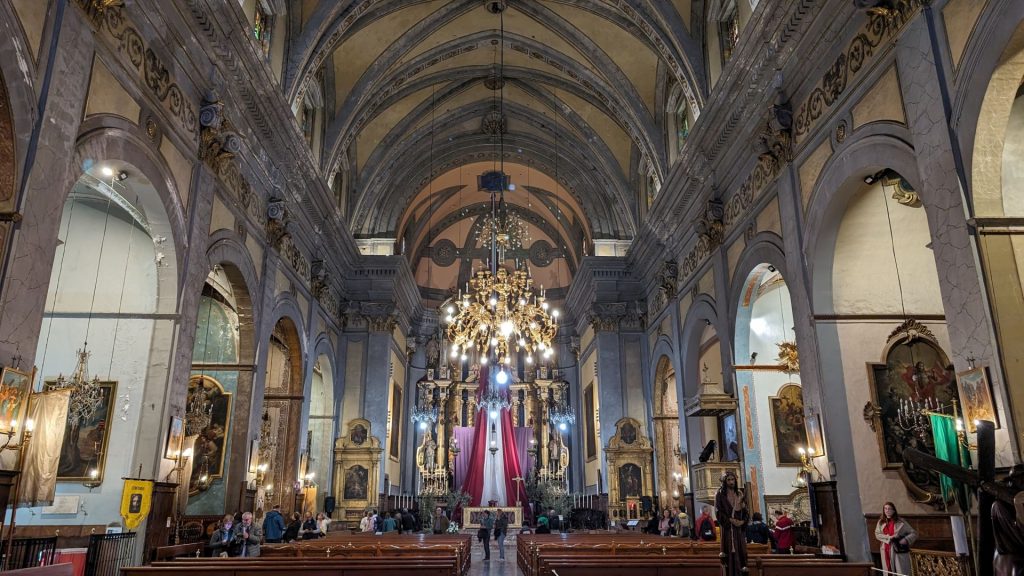
A brief history of this tramway
On October 4, 1913 the first electric tramway line in Mallorca was inaugurated, between Sóller and Port de Sóller. The project of this line was designed and directed by Mr. Pedro Garau, and 4,868 meters of track were laid. The iron bridge over the “Torrent Major,” which was built by the Maquinista Terrestre y Marítima, stands out as a work of art. The tramway initially had its own power station located in the Sóller station itself. This power station was powered by a 65-horsepower explosion engine that drove a Siemens-Schuckert dynamo, giving a direct current of 600 volts.
Although the Sóller tramway was designed for passenger transport, it was also used for freight traffic to the port. In a small isothermal wagon fresh fish was transported from the Port to Sóller and in trailers coal was taken to the old military submarine base at Port de Sóller, to the “el Gas” factory; as well as mines and torpedoes transported from the Caubet powder magazine. The three streetcar cars numbered 1 to 3 and their trailers 5 and 6 are the originals of 1913 that were ordered from the Zaragoza firm of Carde & Escoriaza. The planters were acquired from the Palma tramways in 1954. In addition, the Sóller Tramway has five streetcar cars from Lisbon, numbered from 20 to 24, adapted to the 914mm gauge.
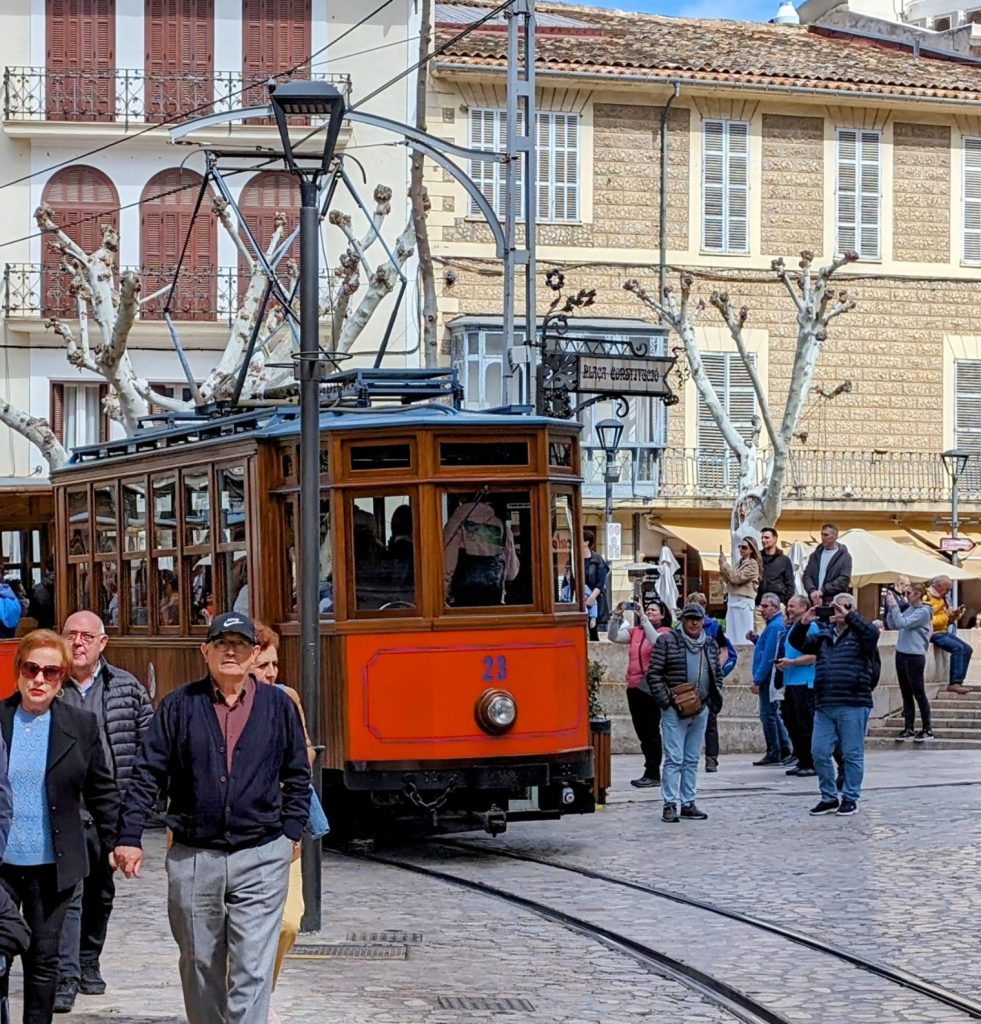
We stood outside when we rode the tram. I think it was only about a 30 minute ride and it was nice to be outside. The views were again lovely. Of course!
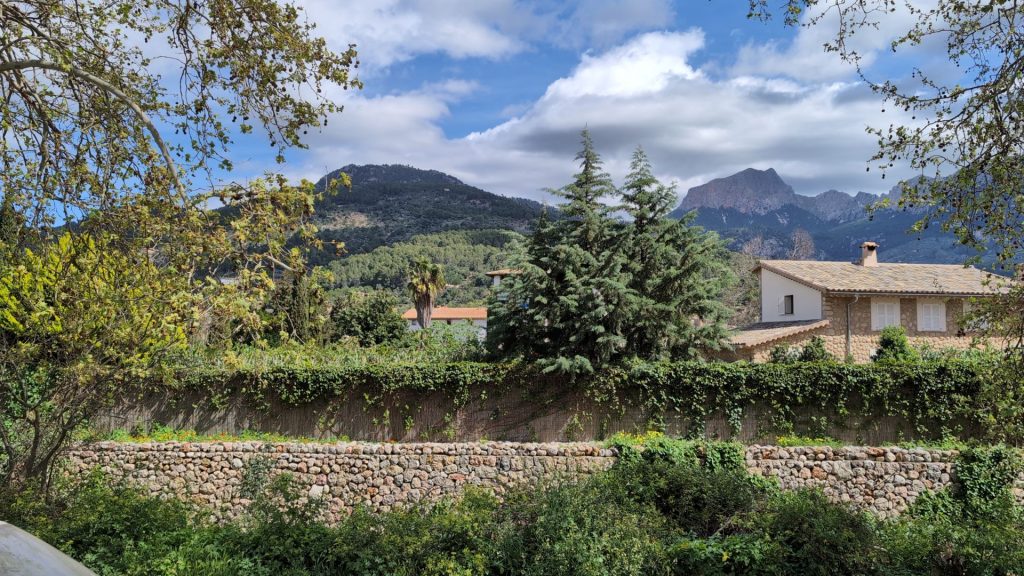
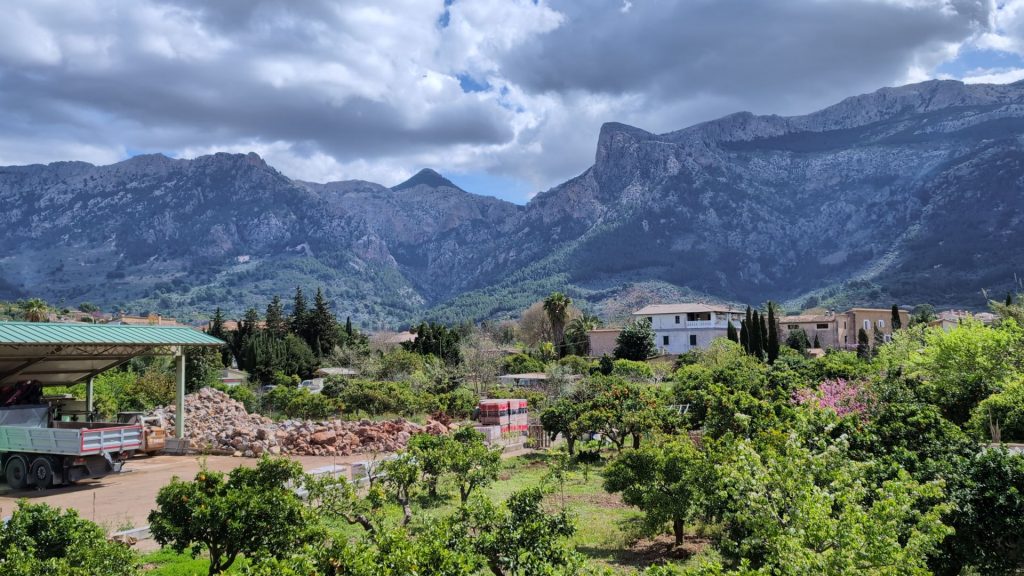
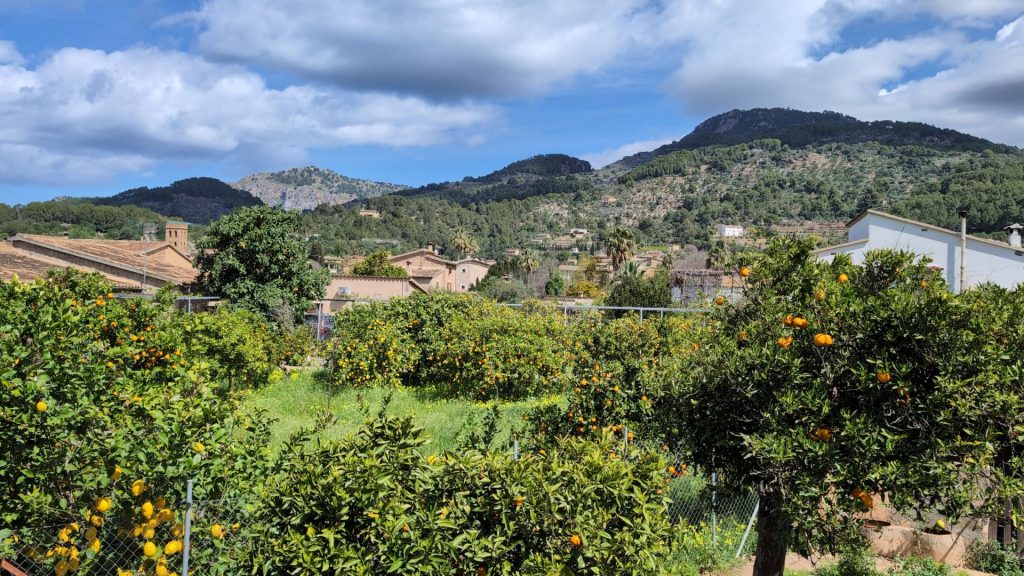
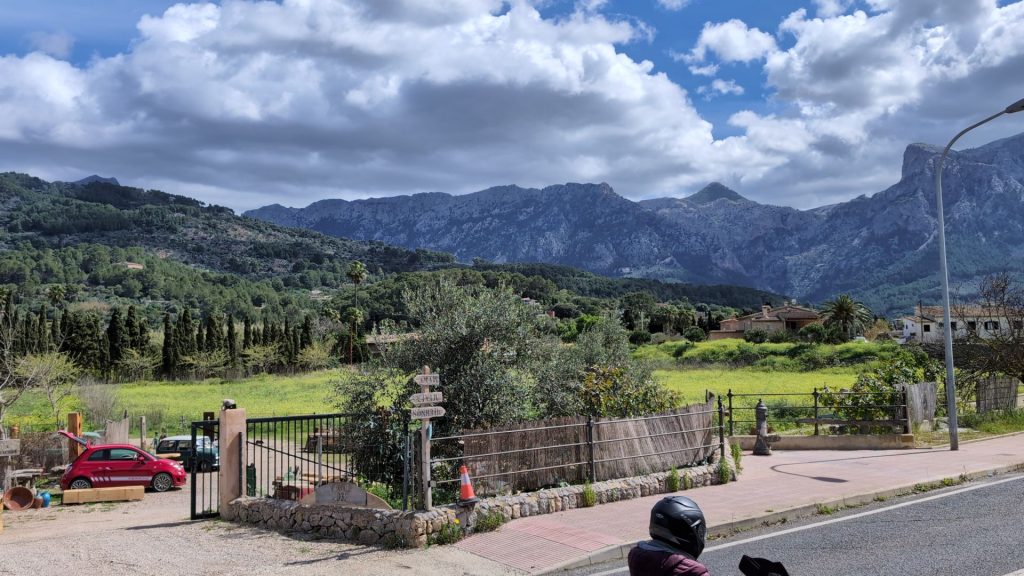
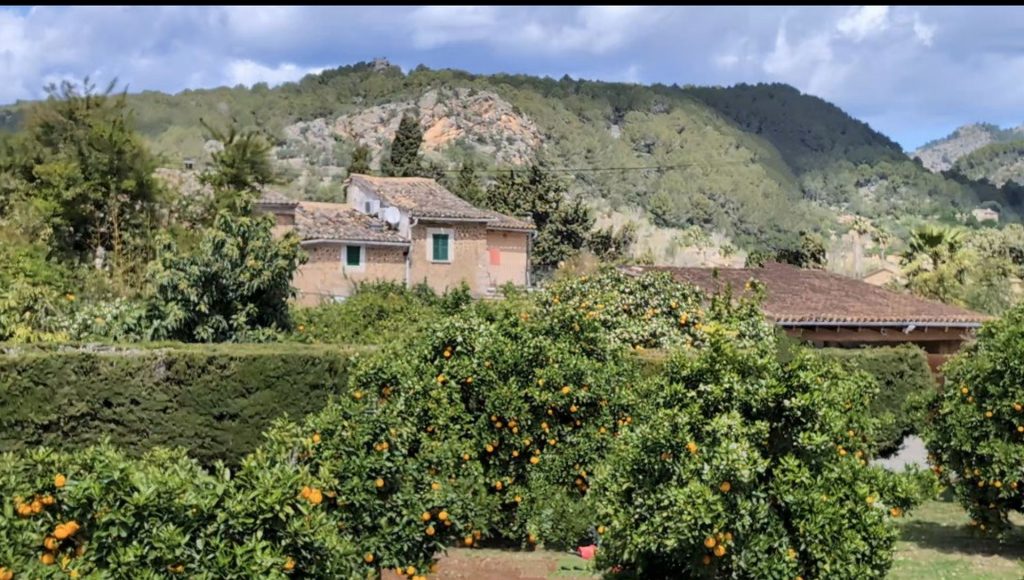
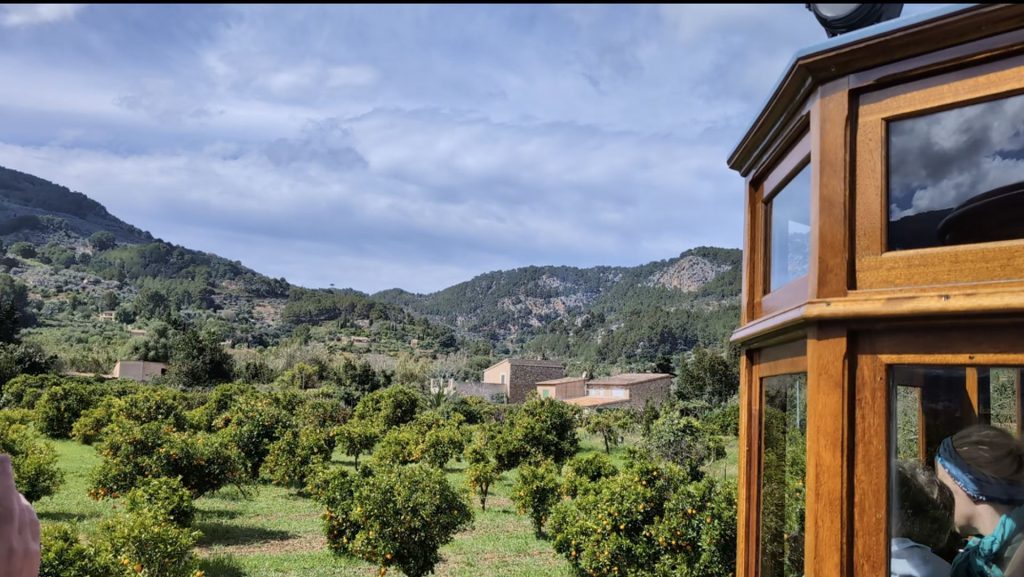
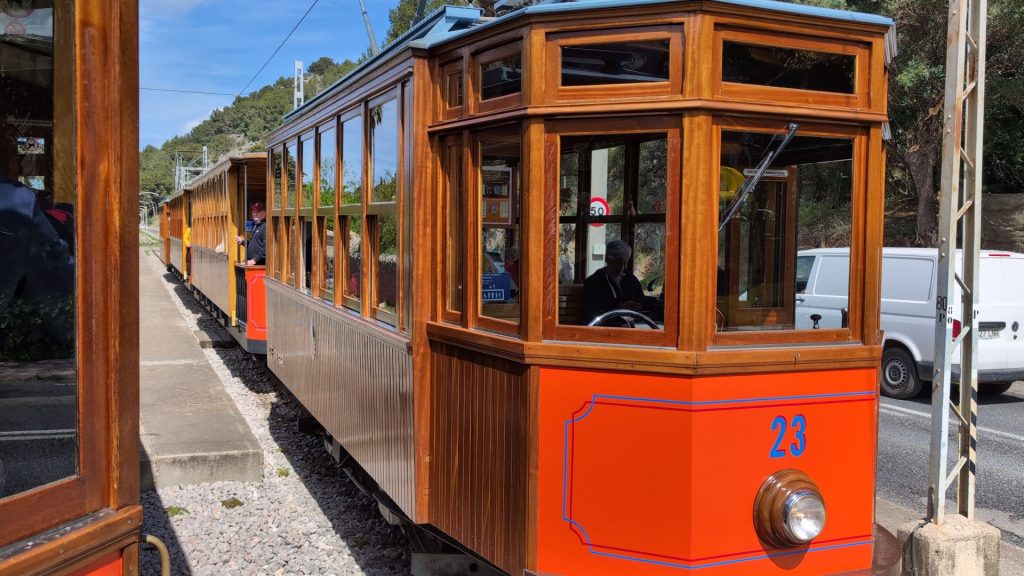
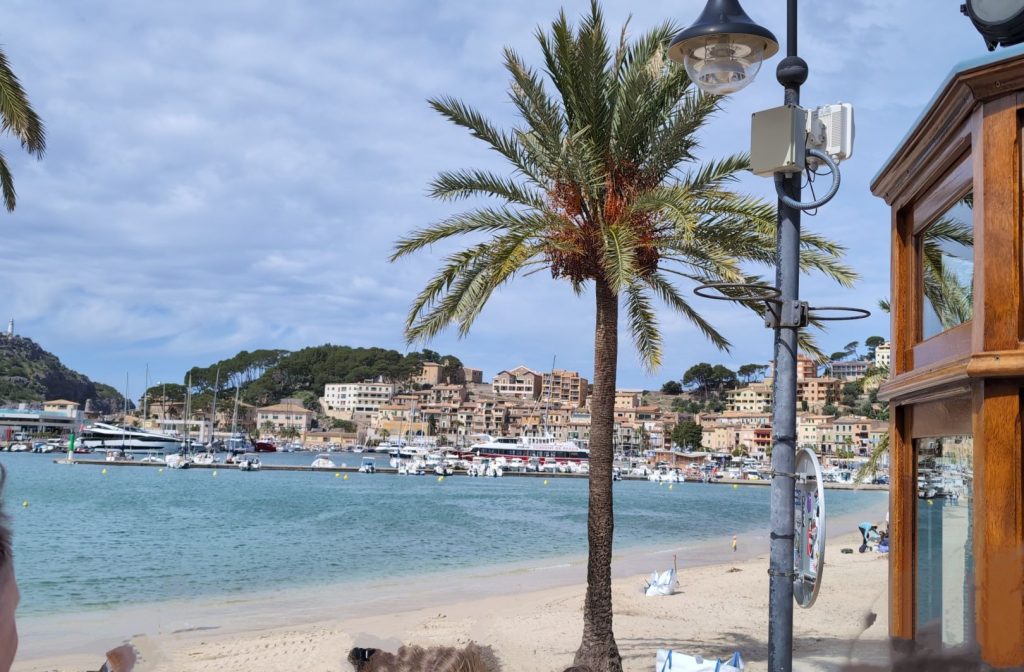
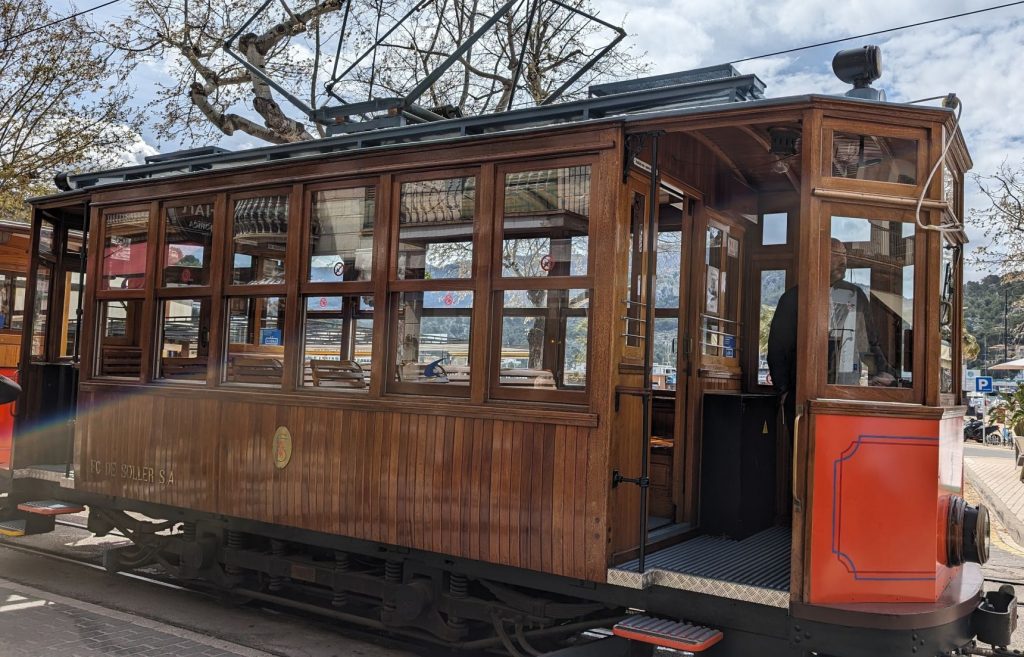
The Port of Sóller has a lot of restaurants and nice views. There were a few boats at anchor in the bay. We did what we usually do: walked around. We also ate lunch. It was a huge amount of food but we ate every bite. We didn’t need dinner that night!
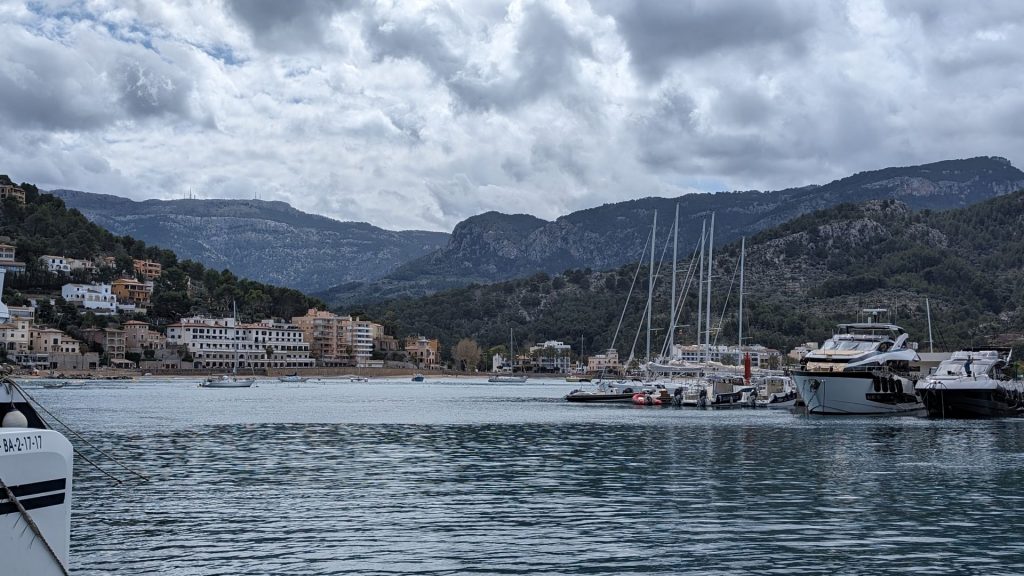
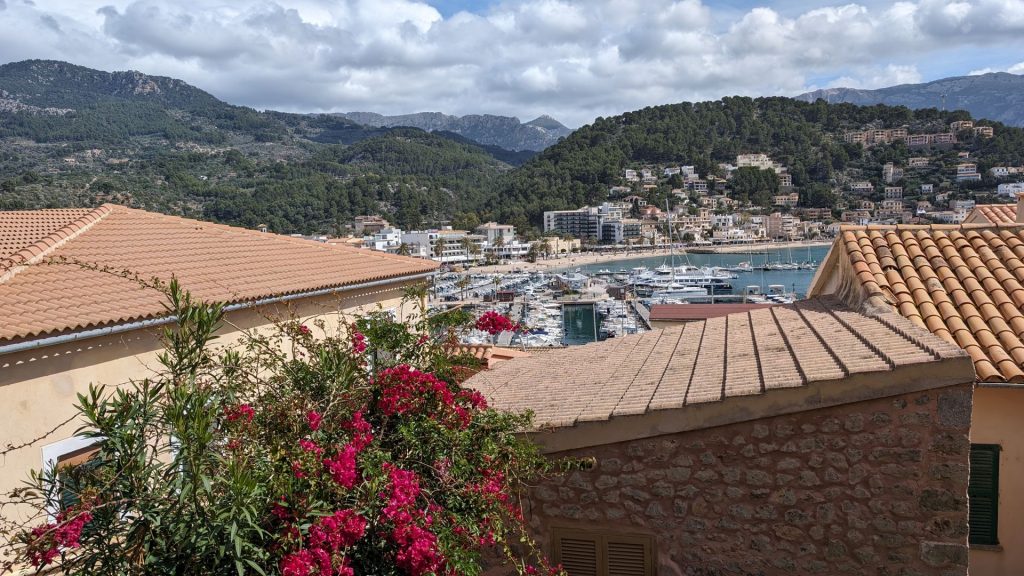
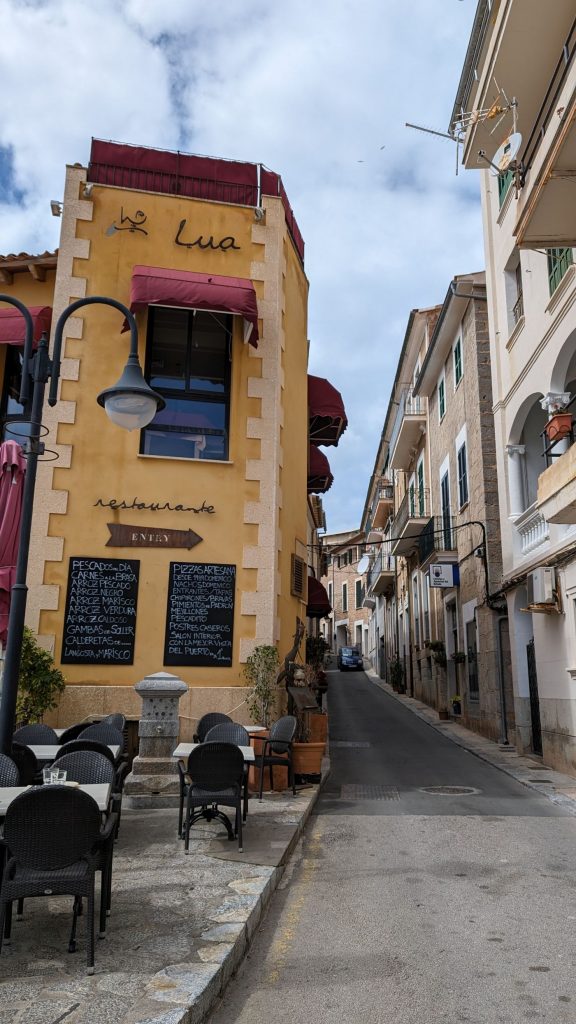
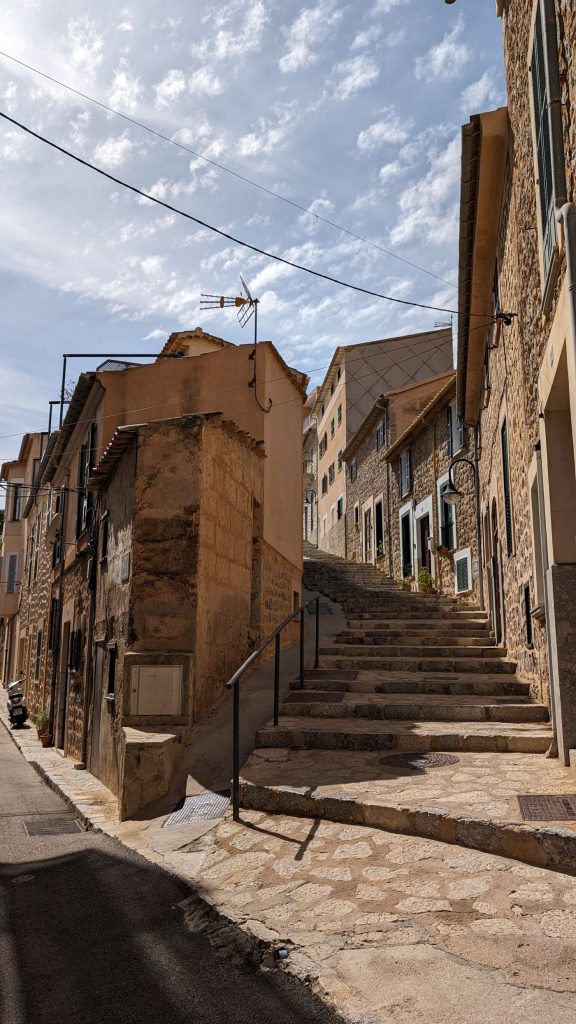
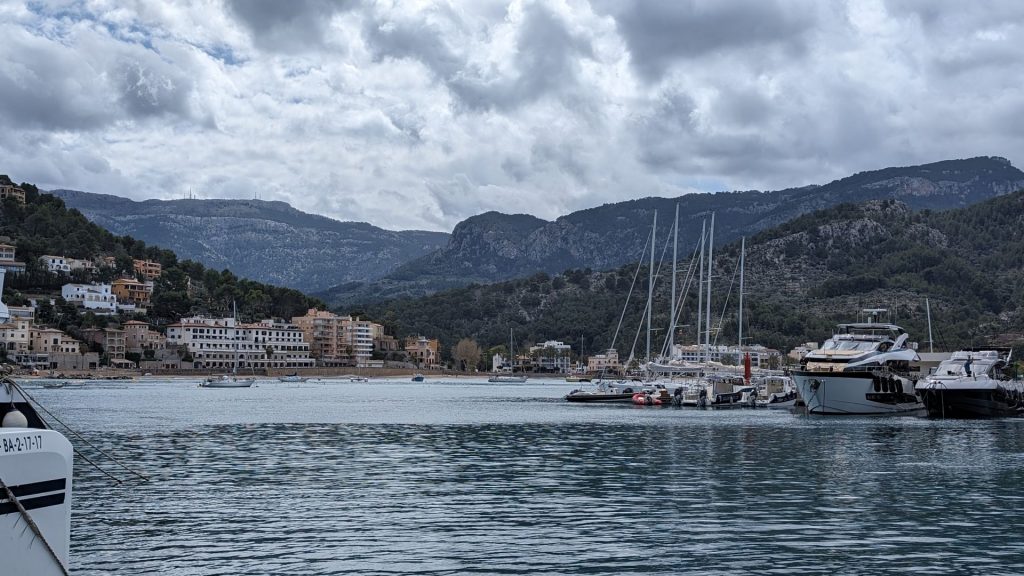
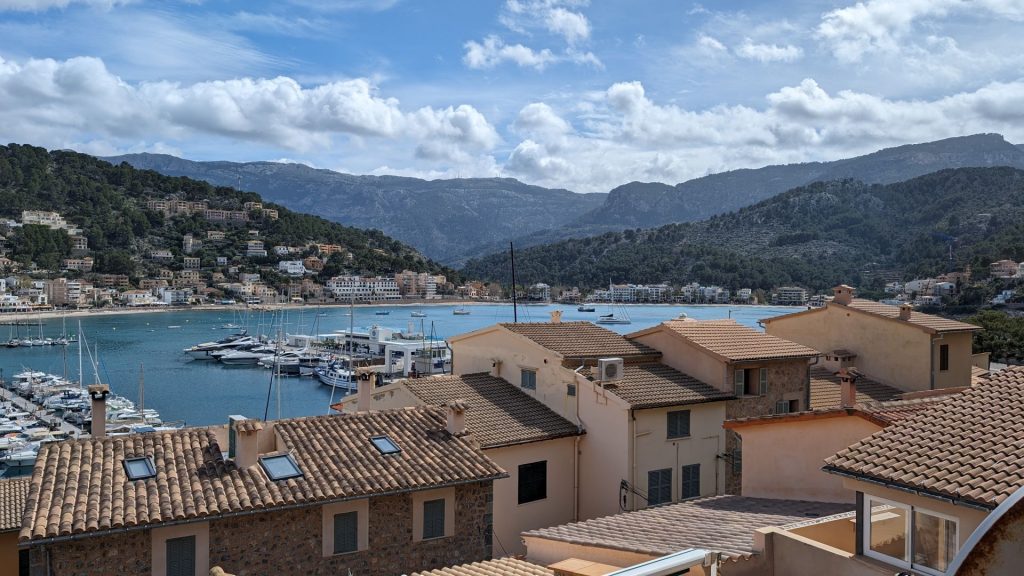
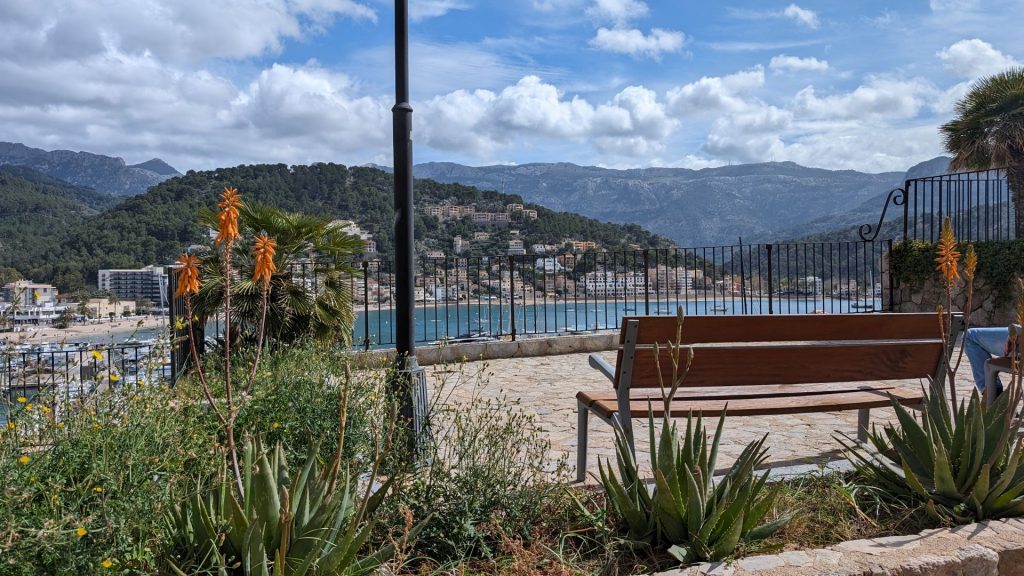
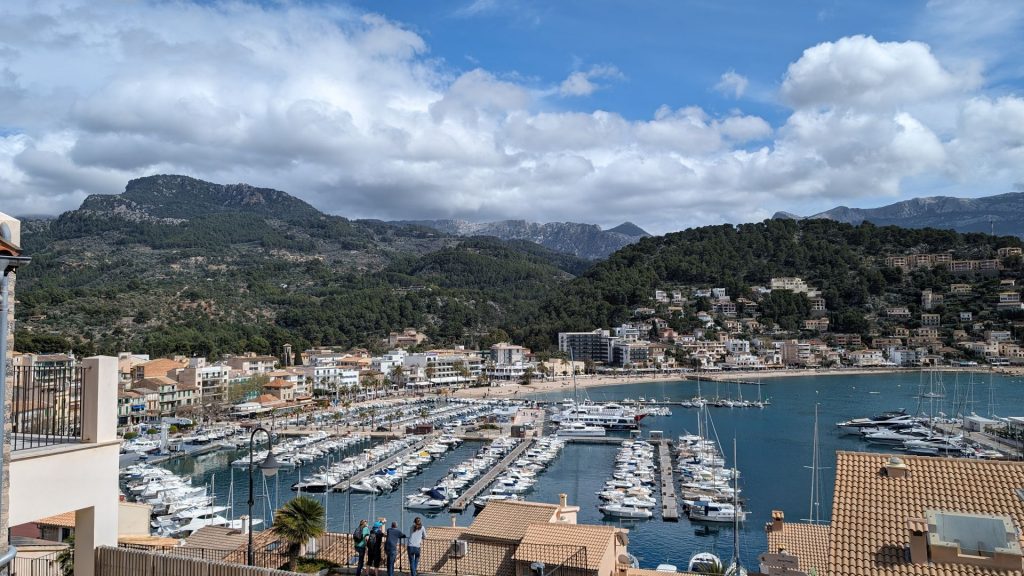
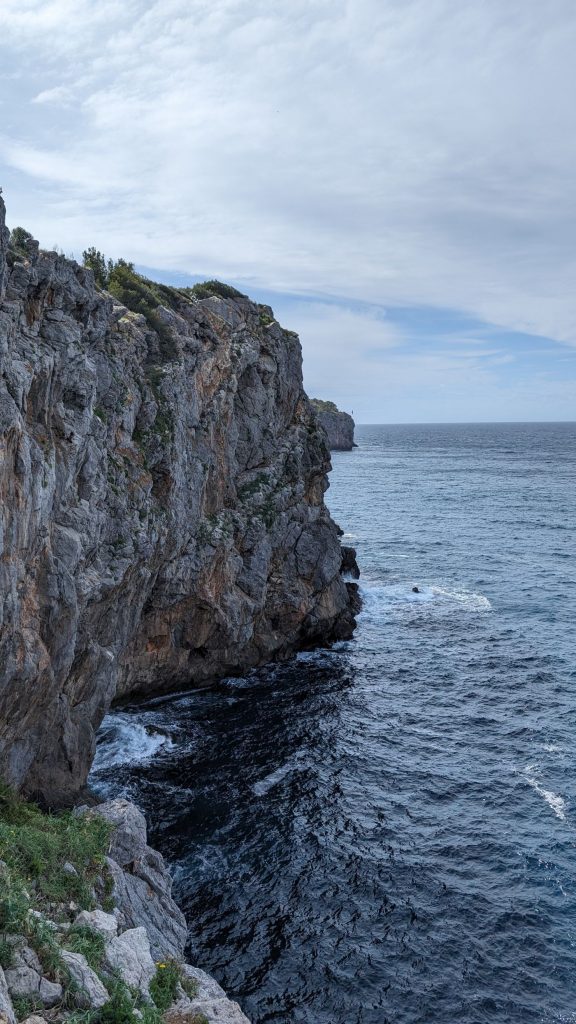
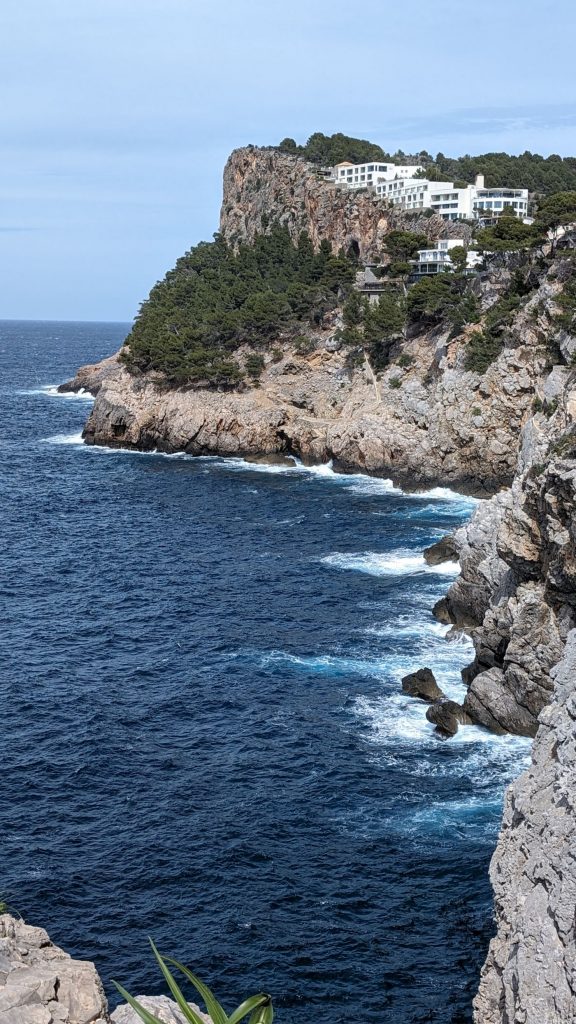
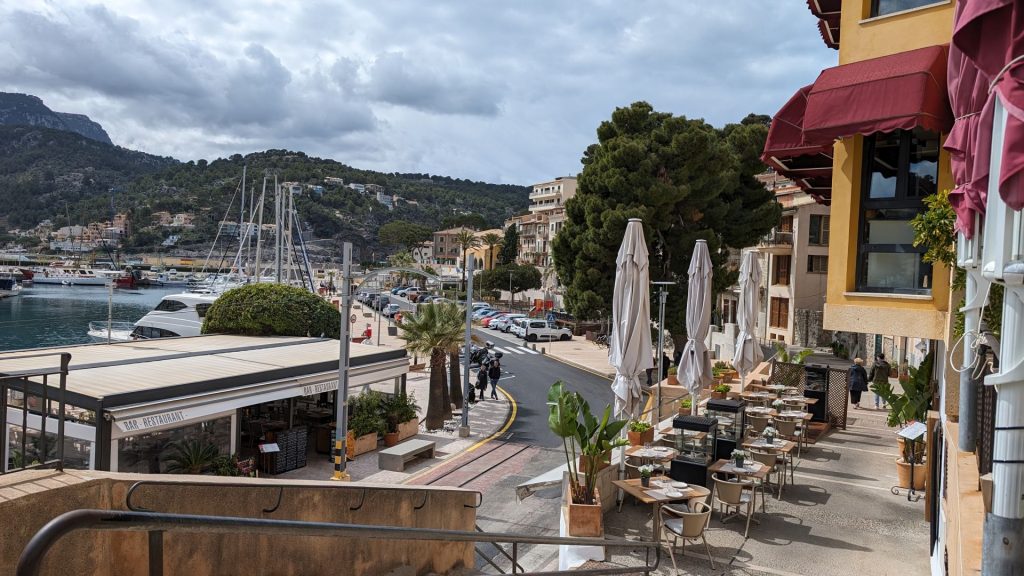
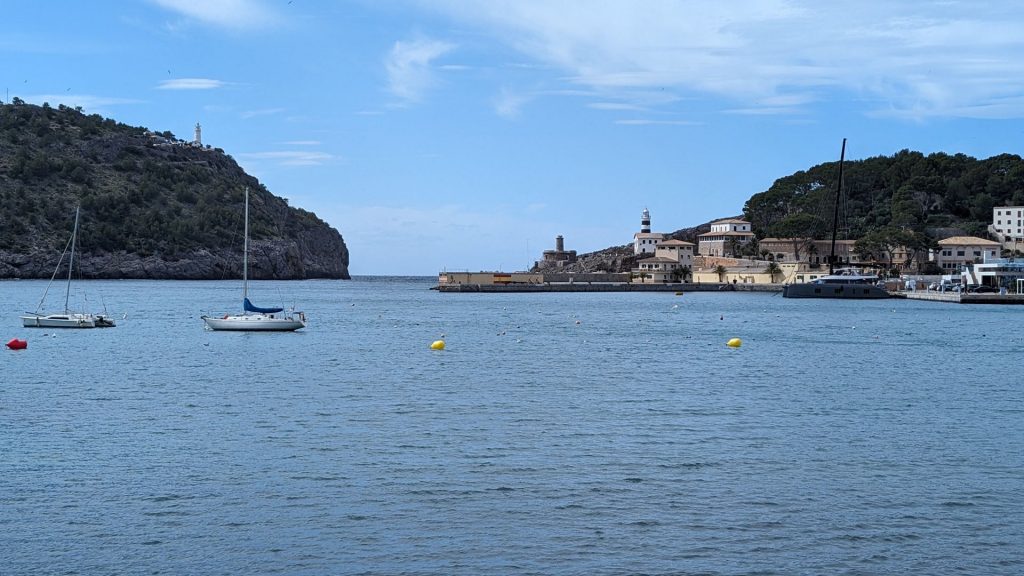
We ate at La Sal. Our meals are pictured below. These are among the biggest burgers I have seen. I am showing a closeup of mine so you can see the pink bun. It has beet juice in it! All of their buns are homemade. And this is one of the all-time best veggie burgers I have ever had! This is a lovely restaurant. And the waiters were so friendly.
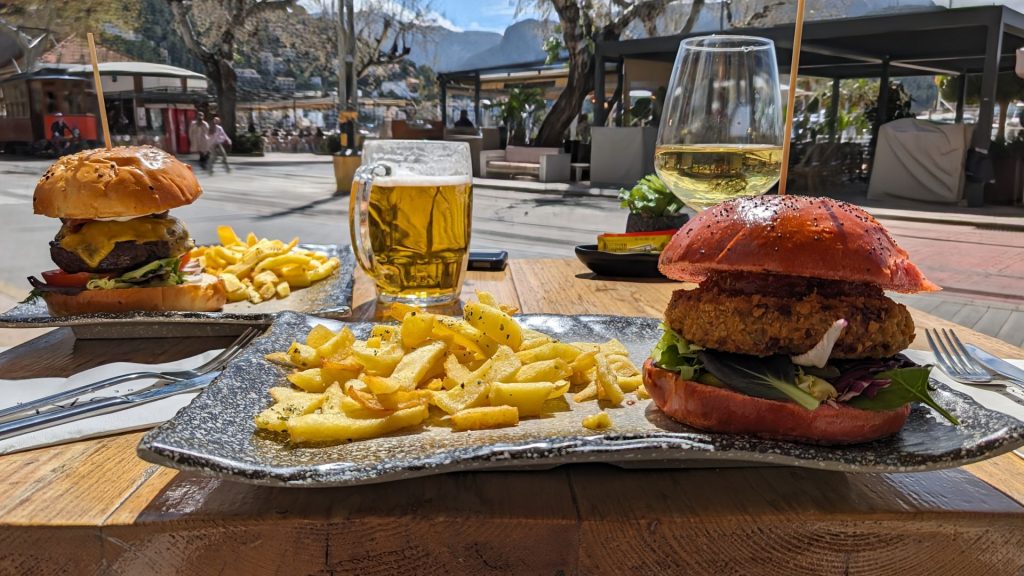
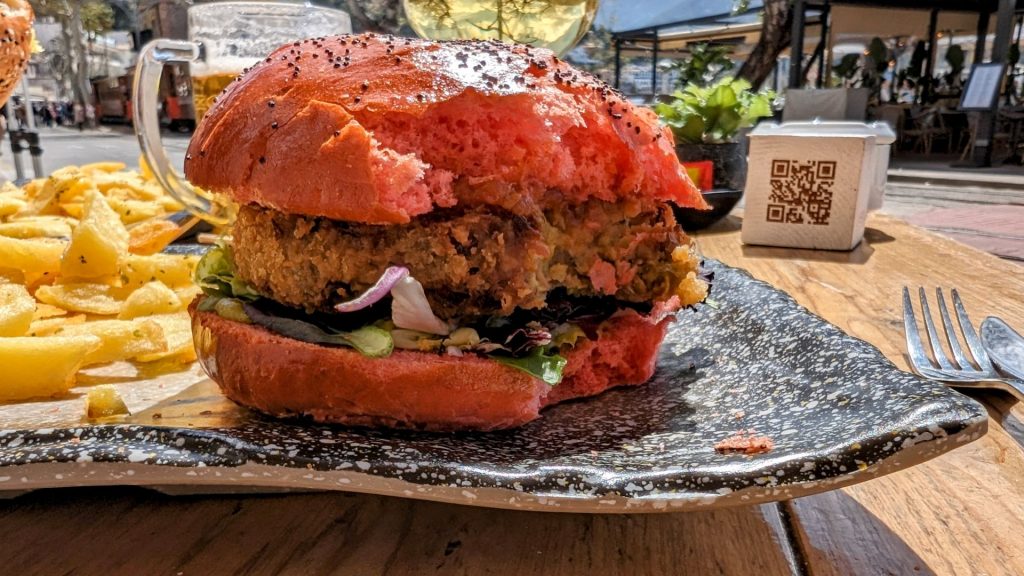
We took the tram back to Sóller and had another hour or more to spend there before catching the train back to Palma. We had some ice cream then did what every tourist probably does in Sóller, we went looking for oil for our sail drive. We were unsuccessful, but we got to see more of Sóller and get some more steps in, so it was fine.
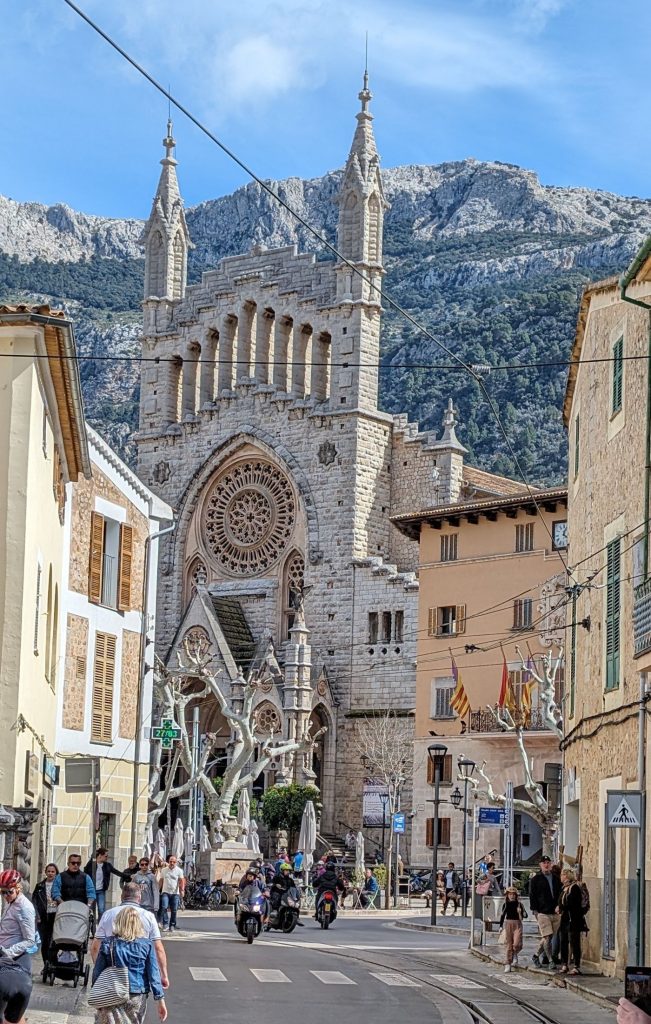
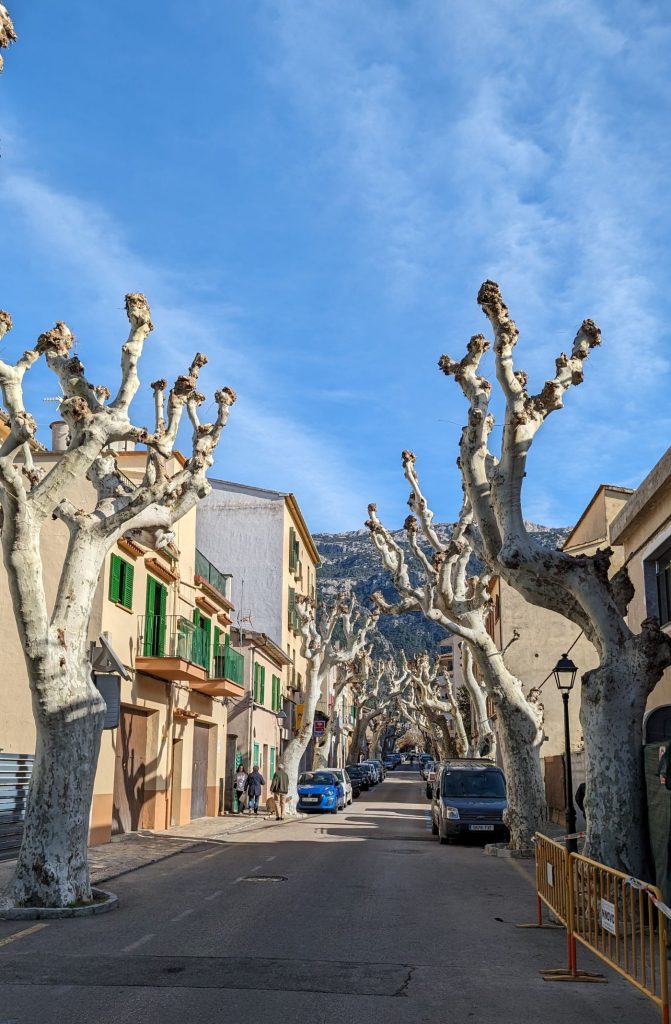
Since we still had time before catching the train, I went shopping. I wanted a souvenir that I would use. Found one! The sandals I’d purchased at Masada in Israel were worn out. The soles were so smooth that I fell a couple of times when walking on wet stone surfaces. It was time for shoes I wouldn’t mind getting wet that had a good grip. Behold my new shoes:
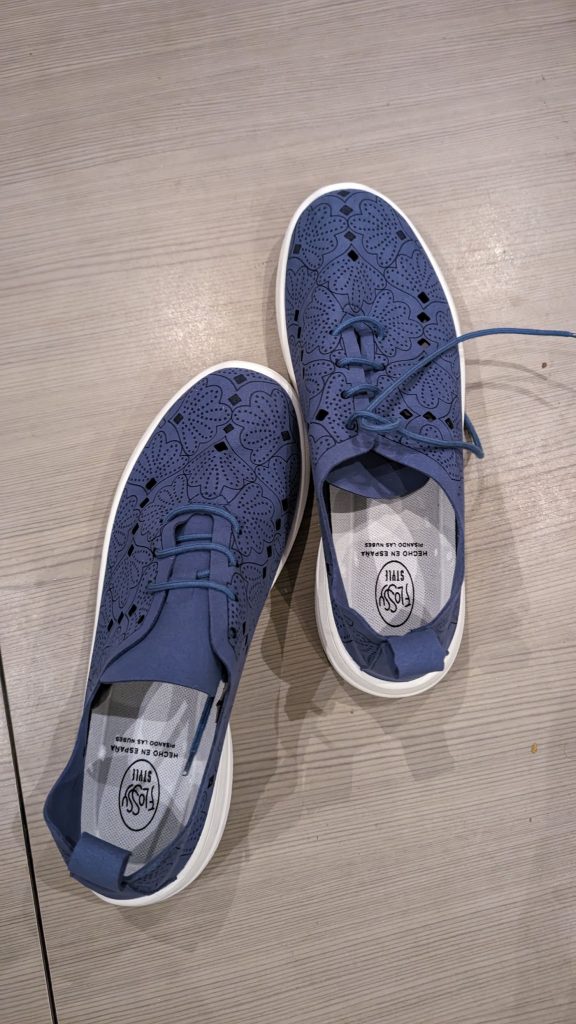
Are they pretty? Not really. But they are practical.
And now it was time to catch the train and see the views with the sun lower in the sky and from the opposite side of the train.
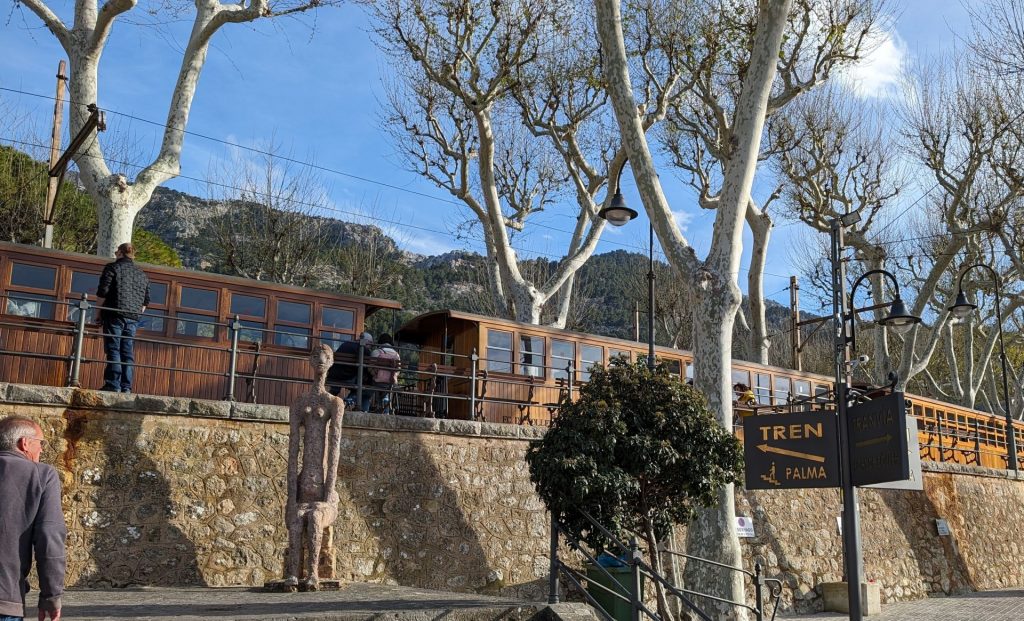
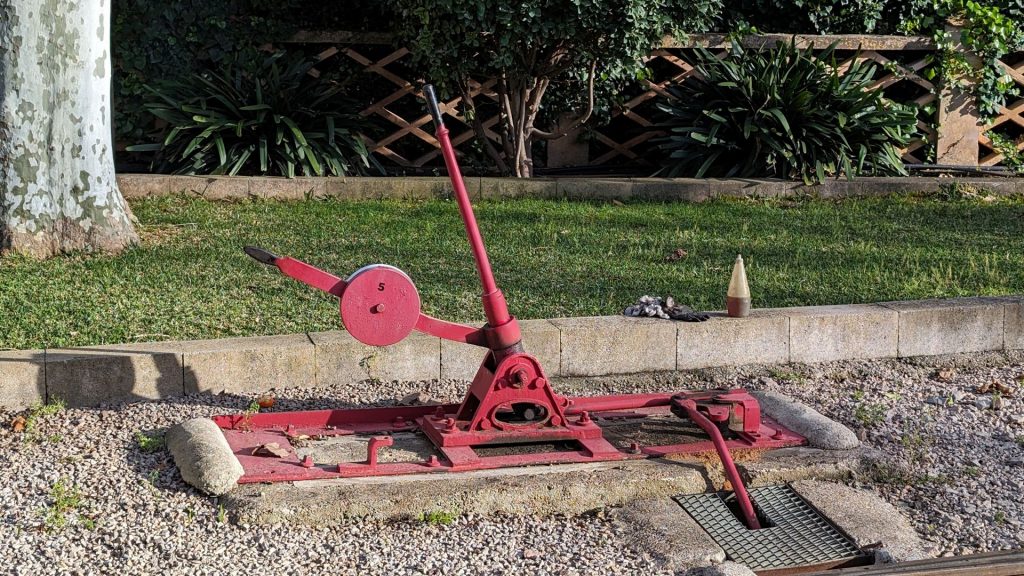
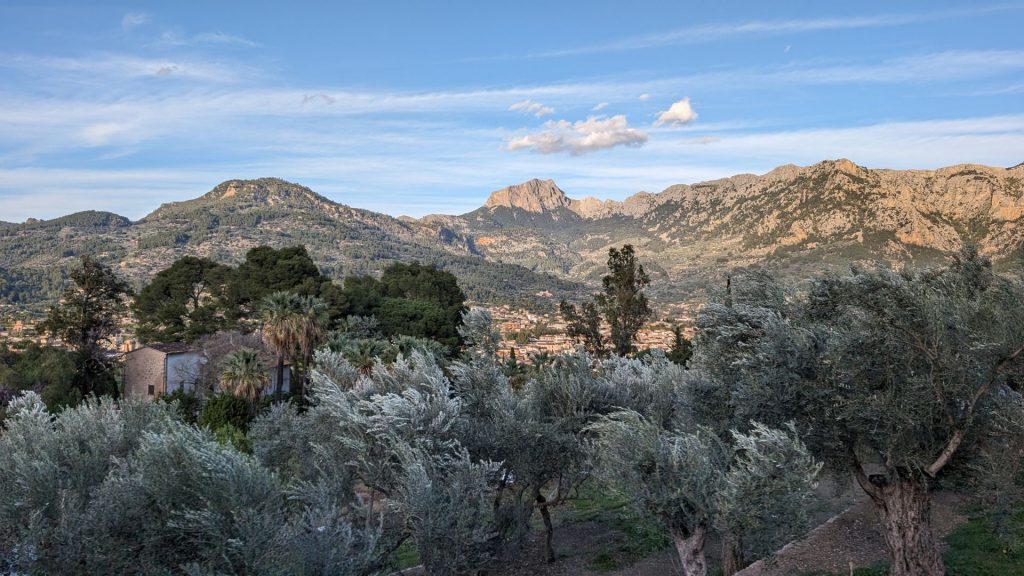
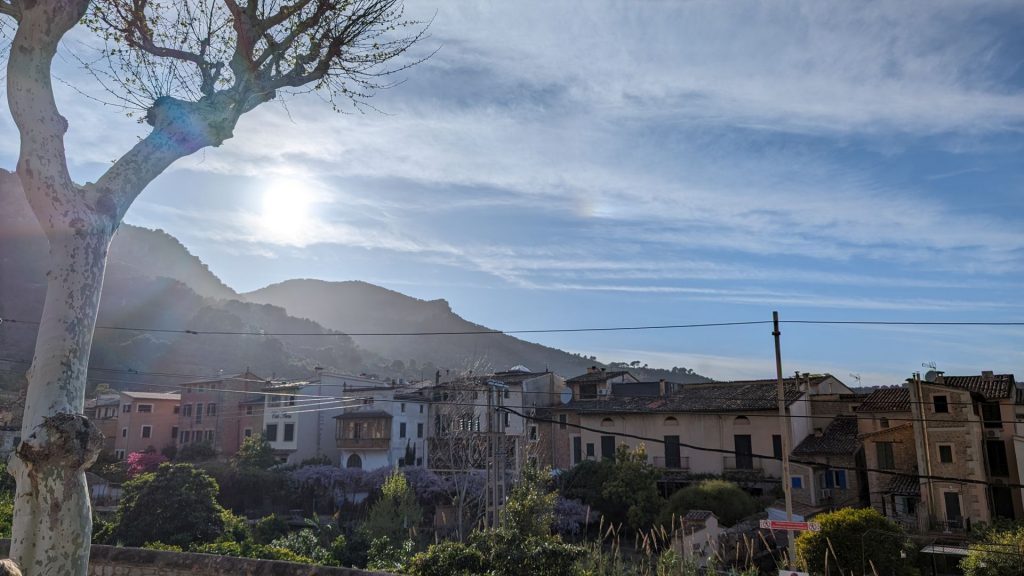
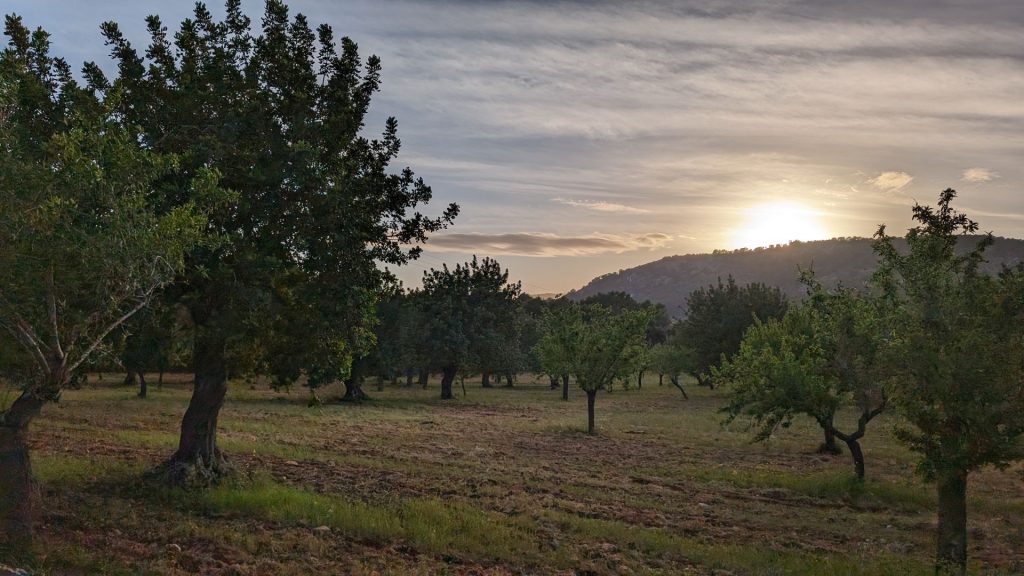
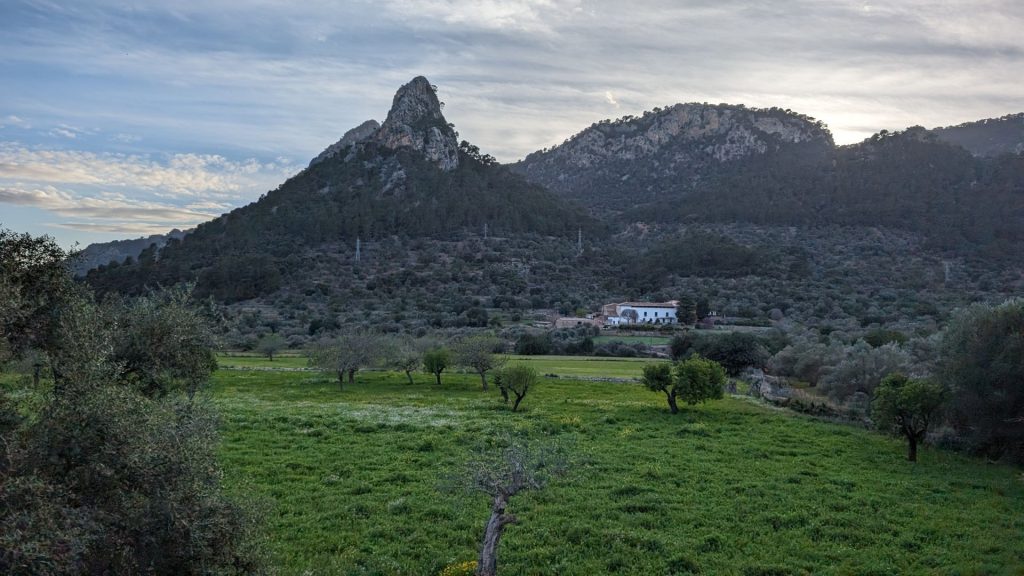
We walked from the station back to Seahike (about 30 minutes). This modern art always greets us as we near the marina.
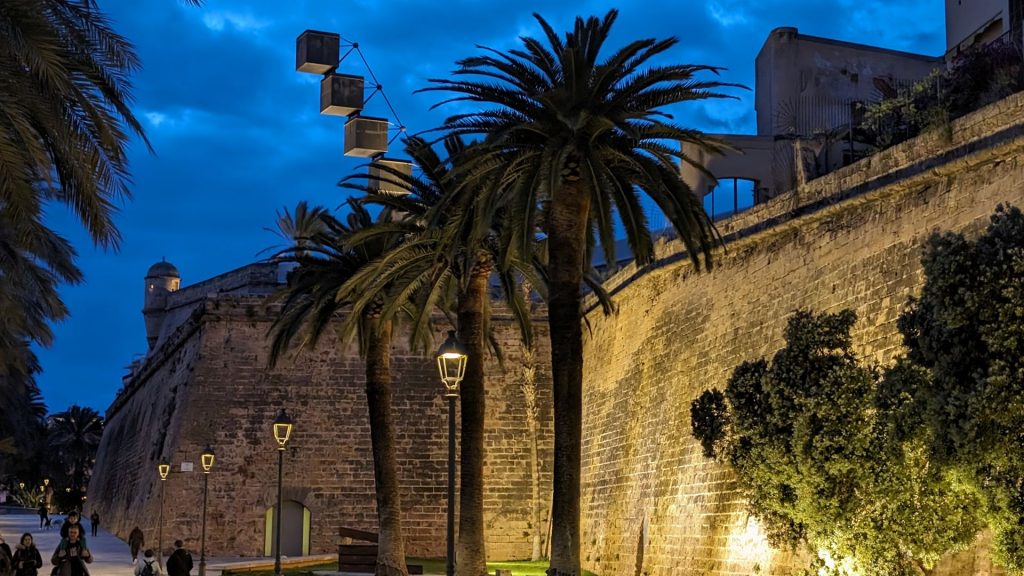
I will end this post with the procession I attended on Good Friday. It was a sorrowful procession of Holy Burial (Sant Enterrament). It started at 7:00 pm. Members of Palma’s brotherhoods walk solemnly in these penance processions through the streets and squares. The brotherhoods or nazarenos are dressed in distinctive penitential robes with iconic pointed hooded cloaks, designed according to the church to which they belong. I read this warning prior to attending, and I am glad I did: “For those seeing these parades for the first time, do not confuse these religious processions with the far-right hate group – the KKK or Ku Klux Klan- in the USA.” Huge heavy religious effigies are carried through the streets on pasos or floats – it is a sight – and quite an eerie sight too. These floats are works of art and show scenes from the gospels related to the Passion of Christ or the Sorrows of Virgin Mary. The parade also included marching bands playing really somber (borderline disturbing) music.
The parade moved at a snail’s pace and often stopped entirely. I tried to ask a woman next to me why this was but she didn’t speak English. Through hand signals she seemed to indicate that it was slow on purpose. I am not sure why, but I can tell you that the huge floats are carried by people. You can see their feet under the cloth suspended from the float to the ground. Perhaps the floats are heavy and the people need a rest. Or maybe the speed just fits the solemn occasion. Its pace causes one to slow down and ponder.
Each member of each brotherhood holds a candle. Children, also dressed in robes, but without the hoods, walk around with sticks (with varying amounts of wax on the end) collecting the wax so it doesn’t land on the road.
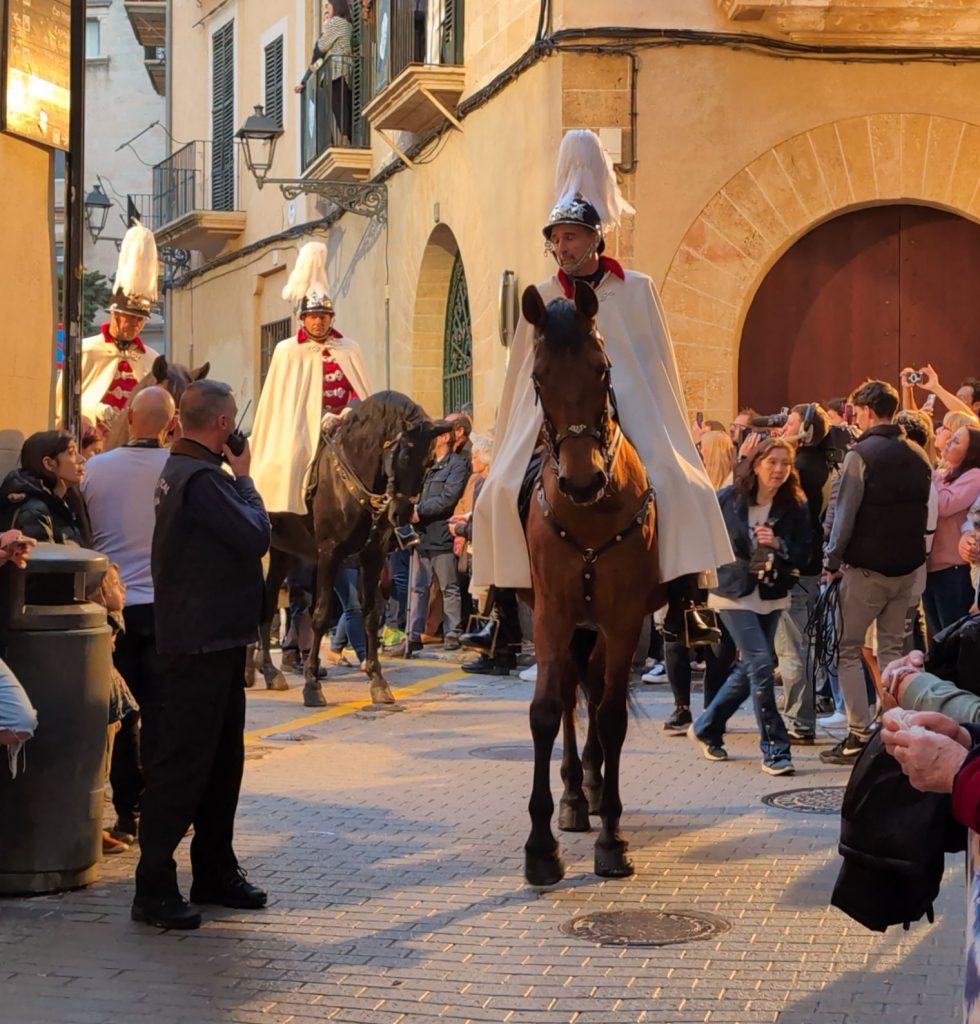
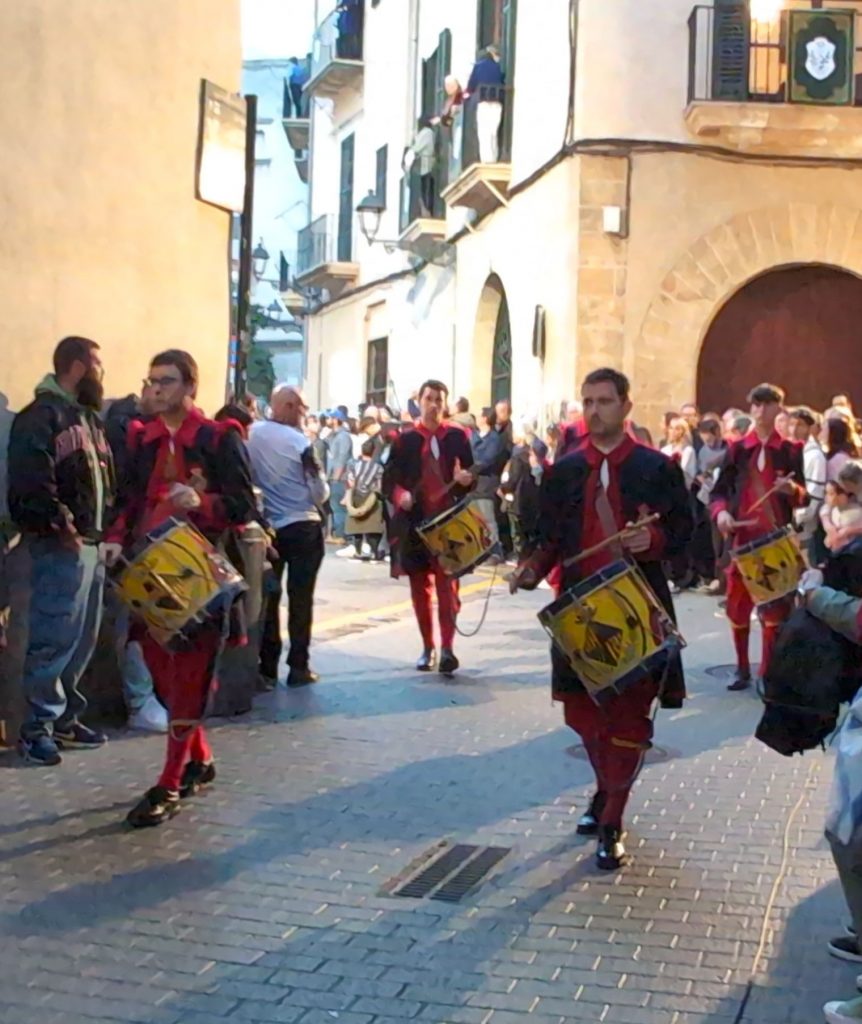
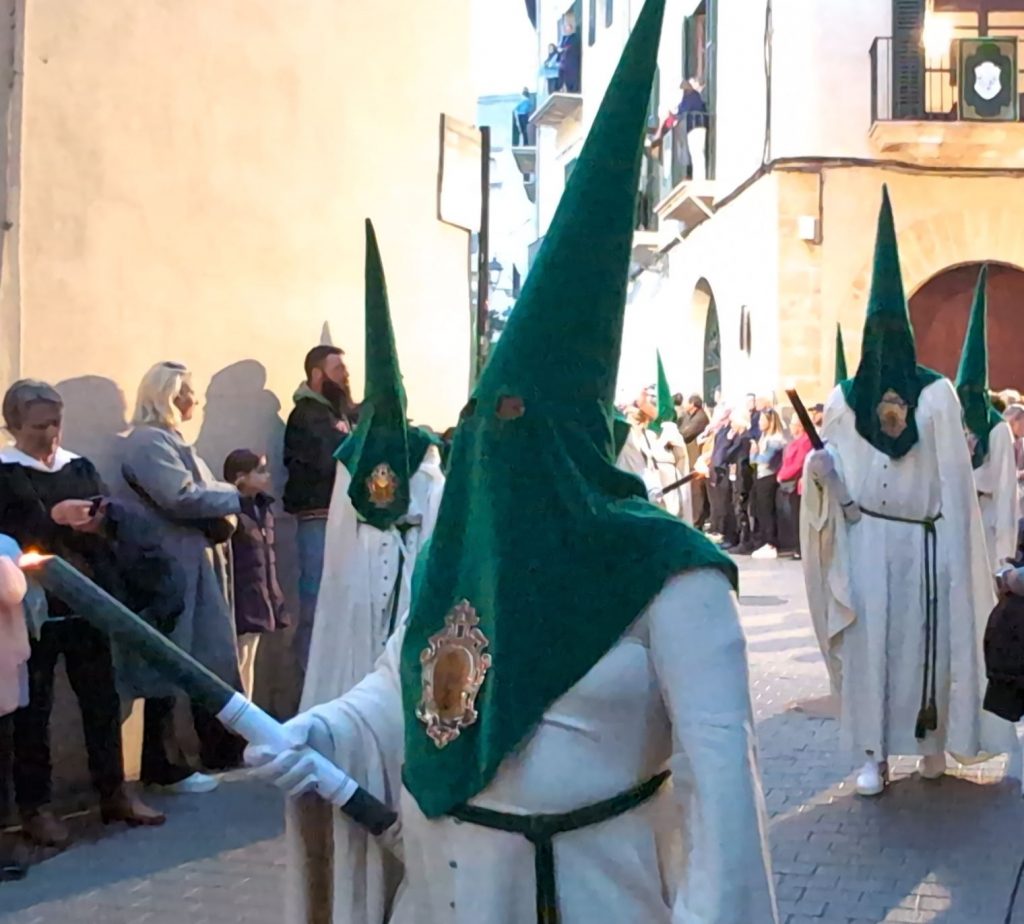
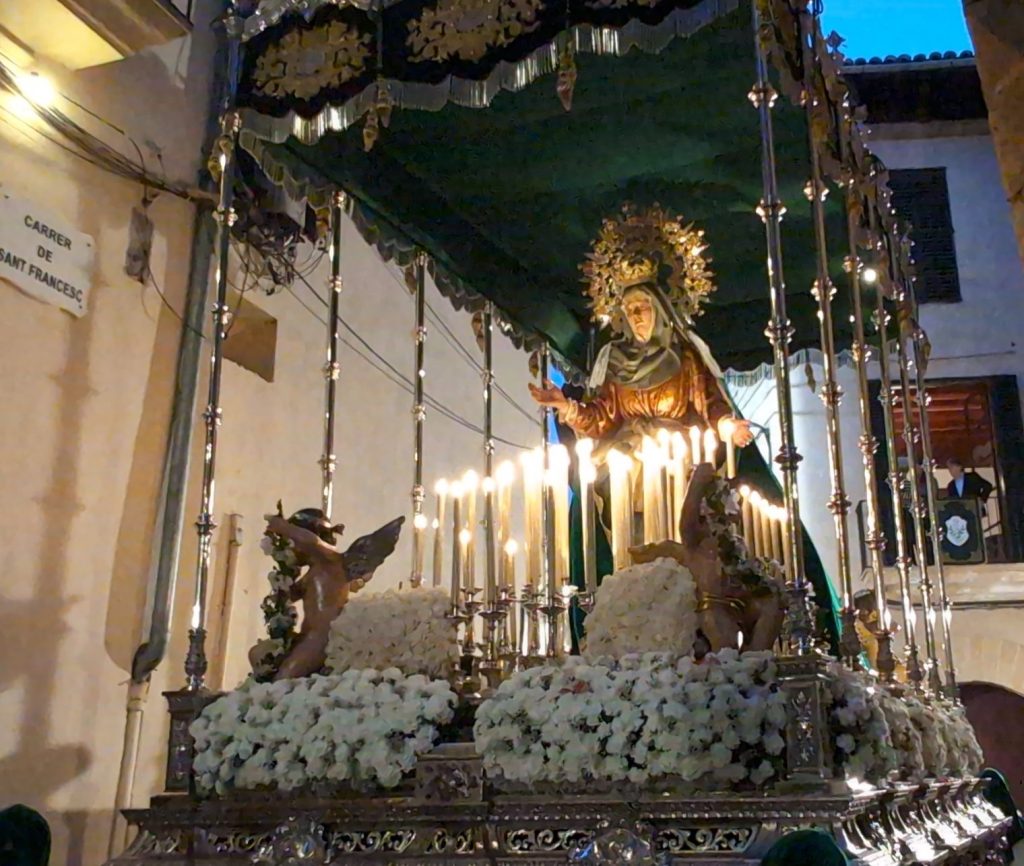
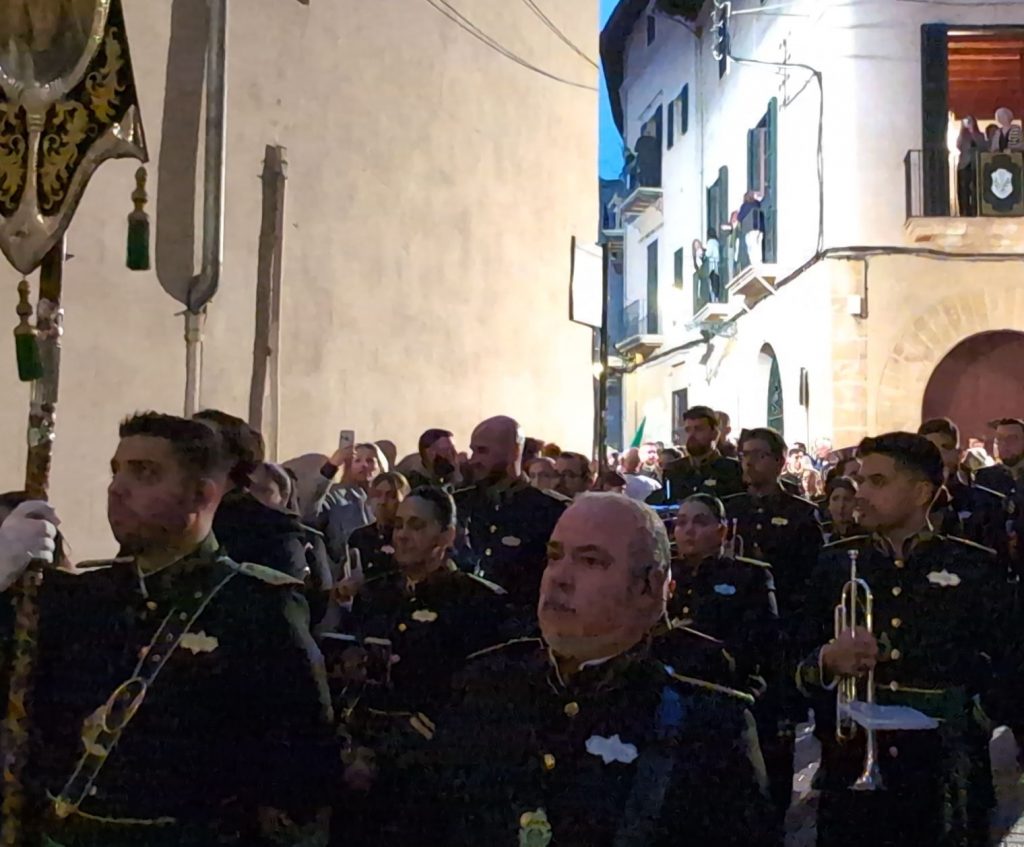
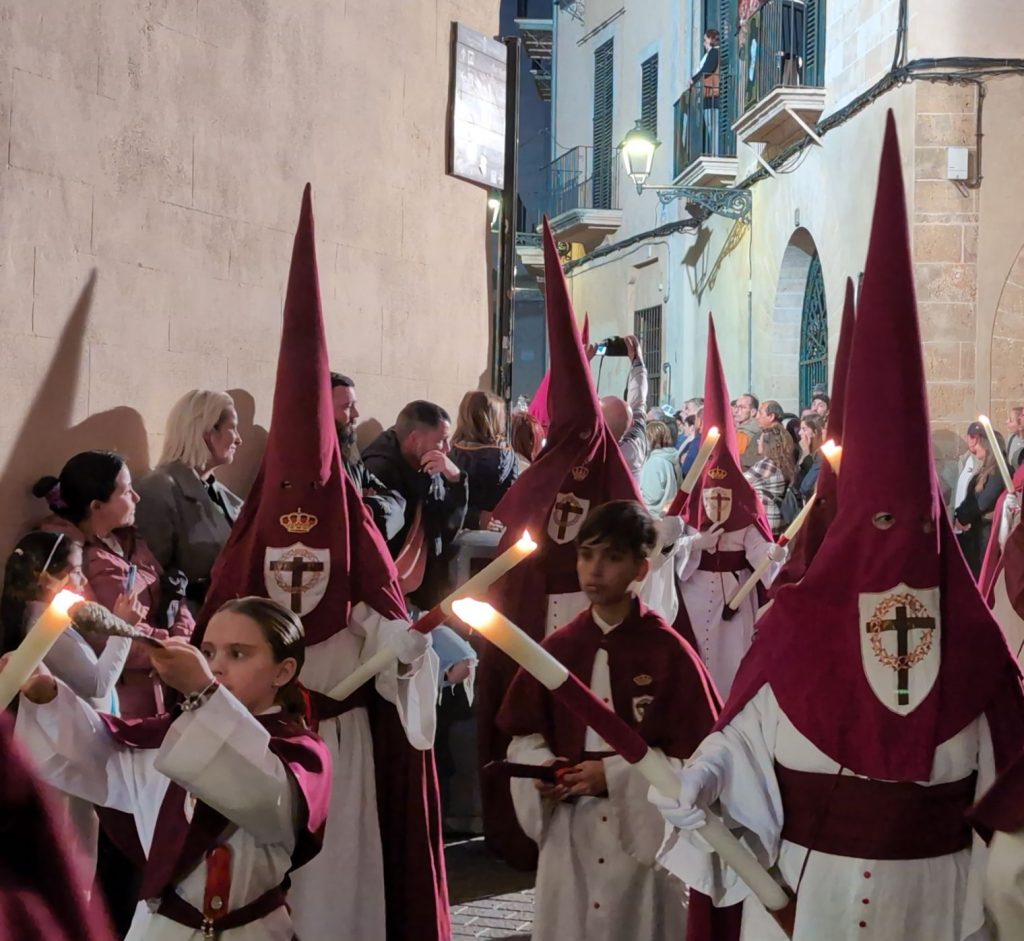
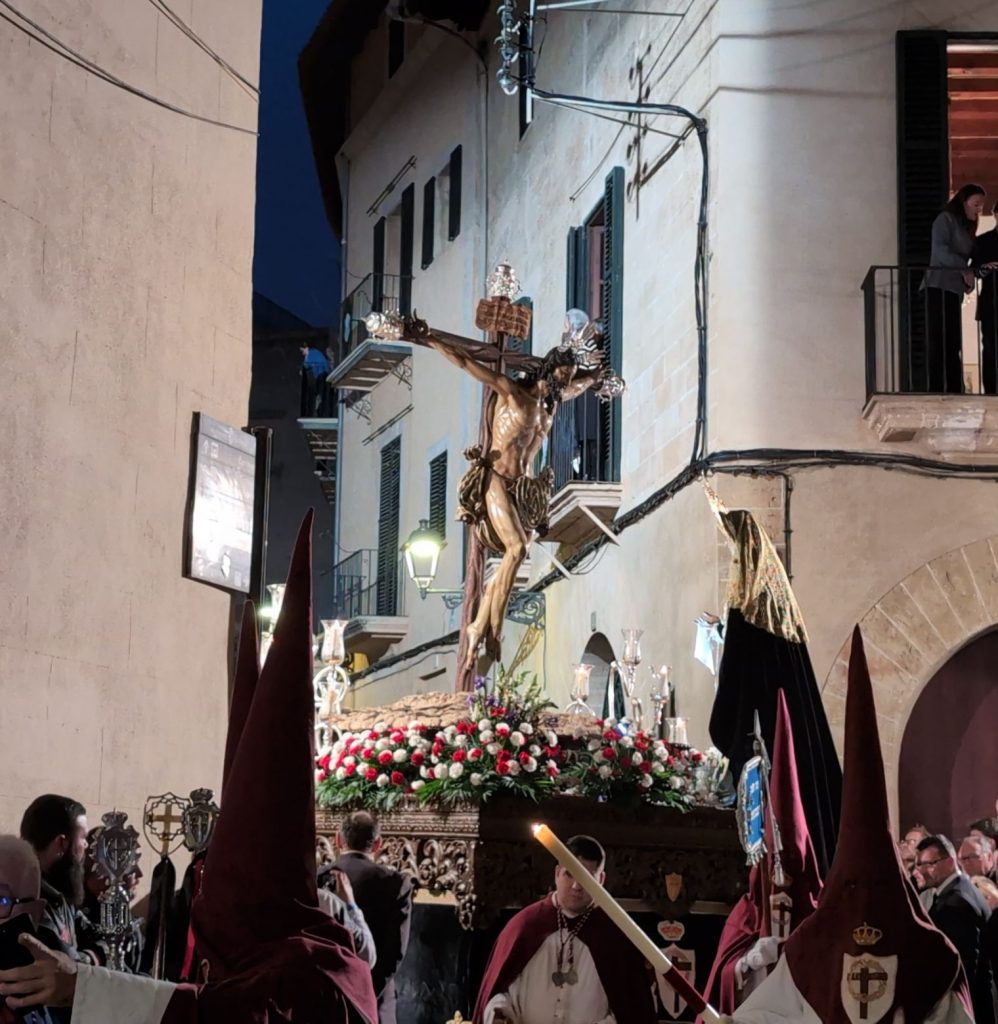
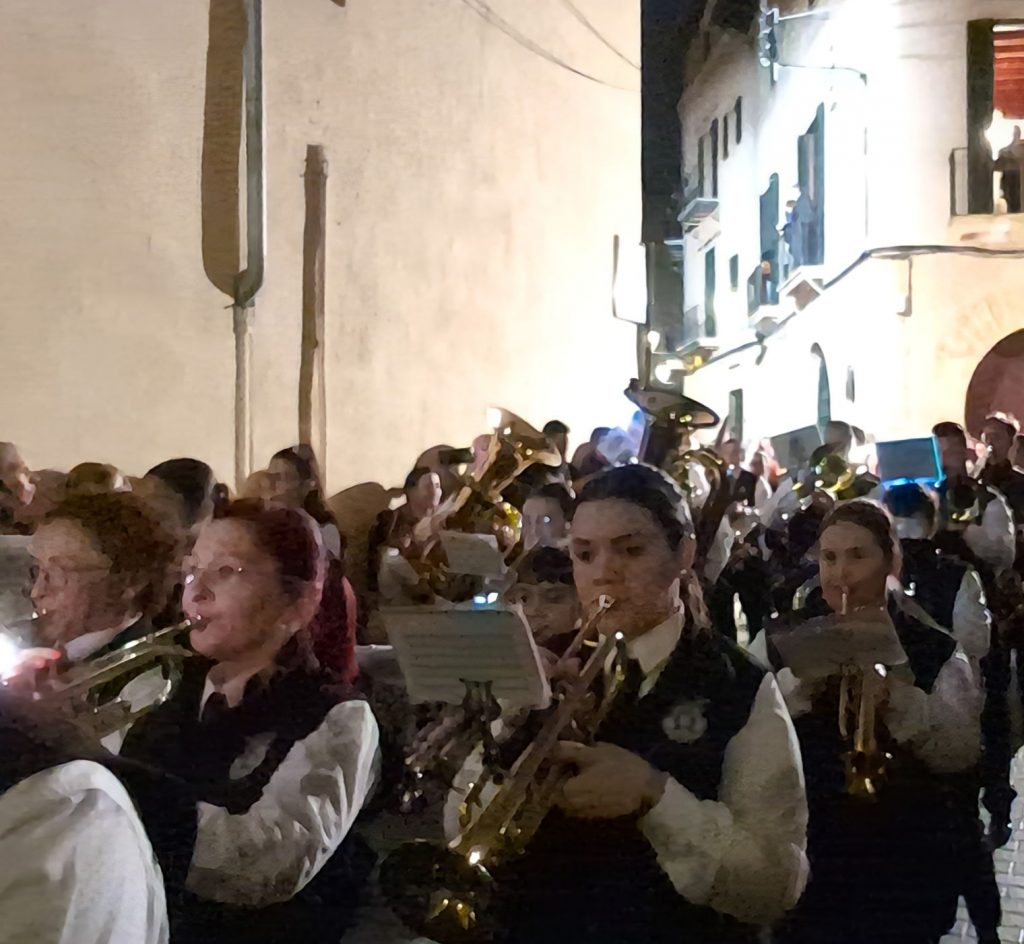
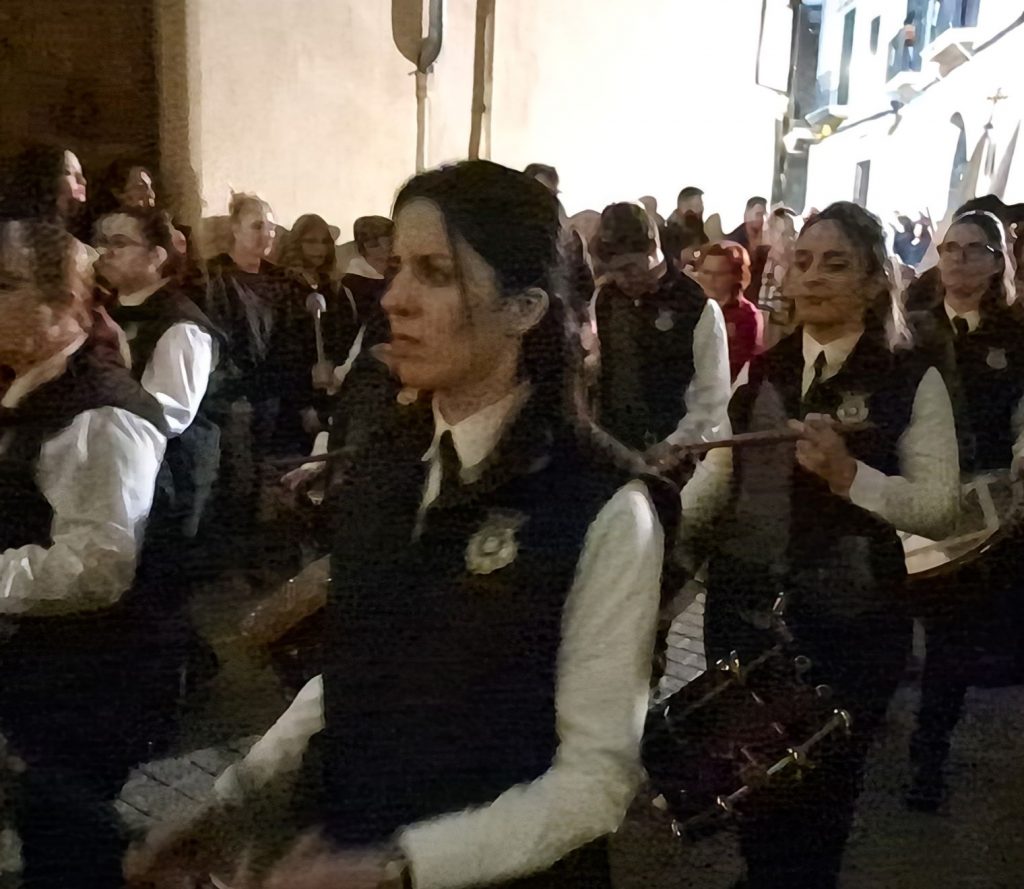
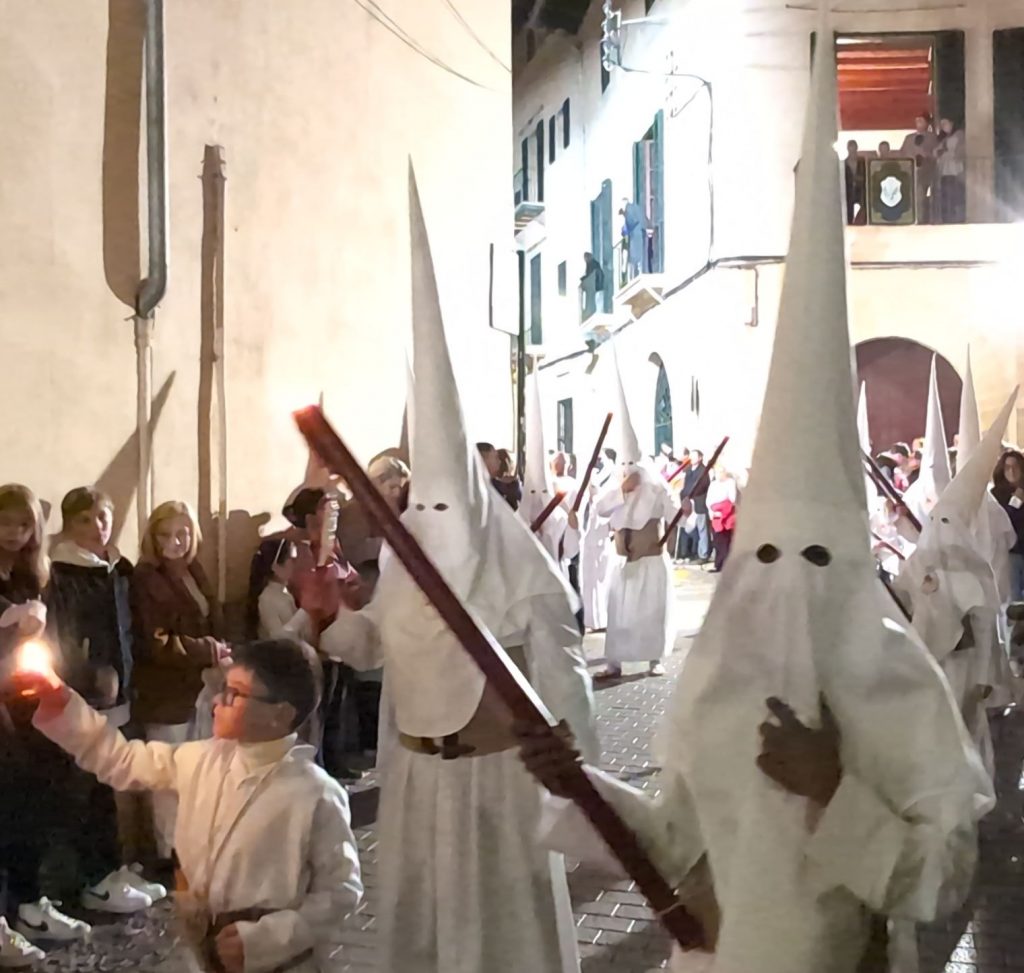
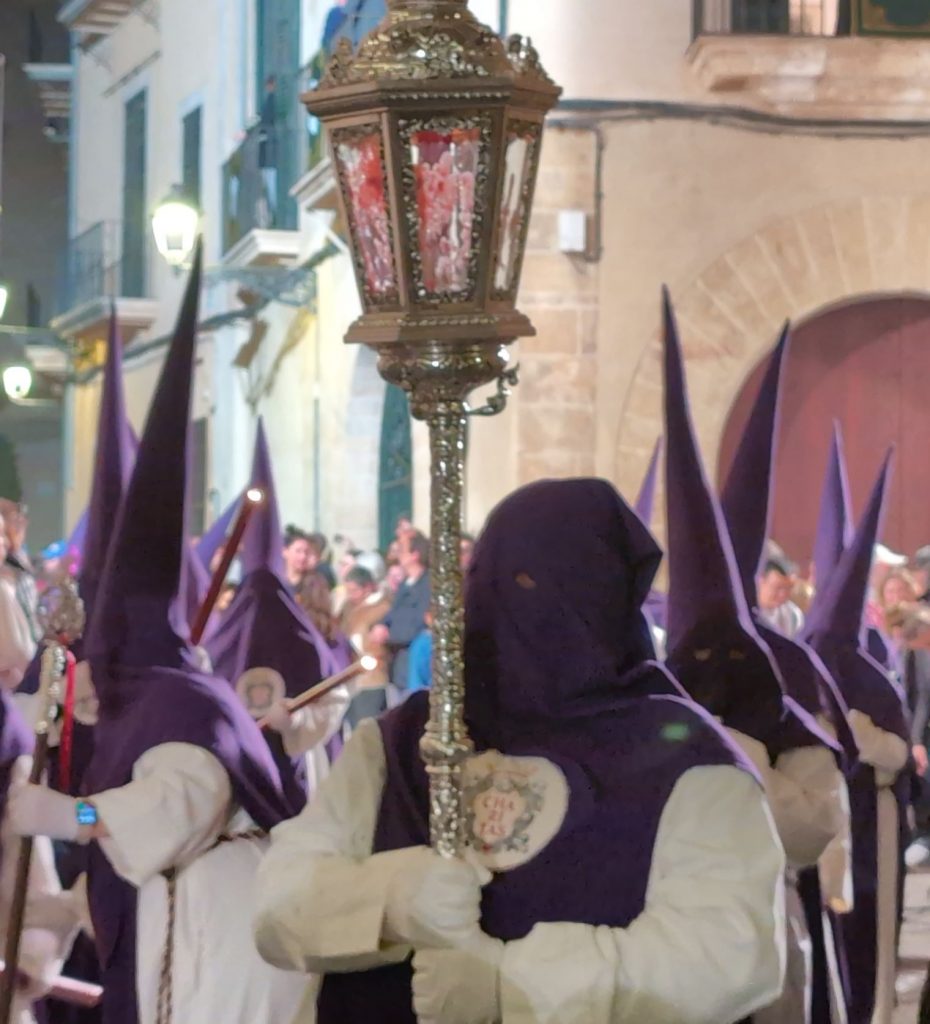
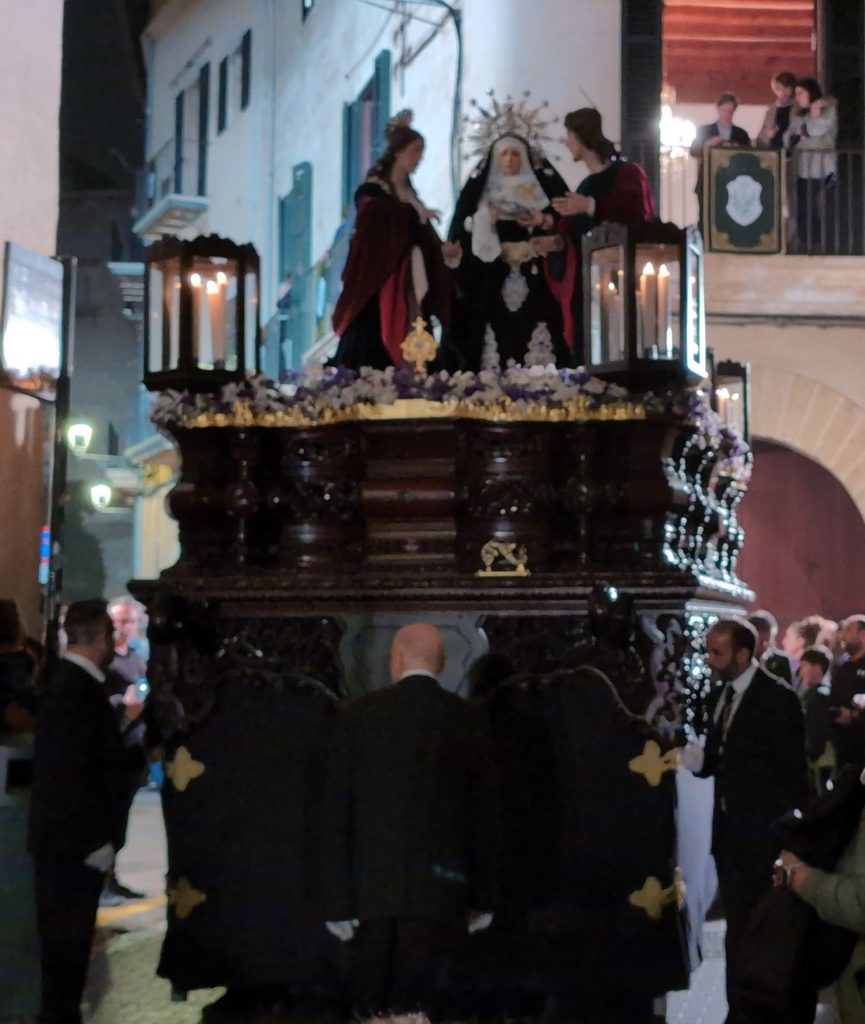
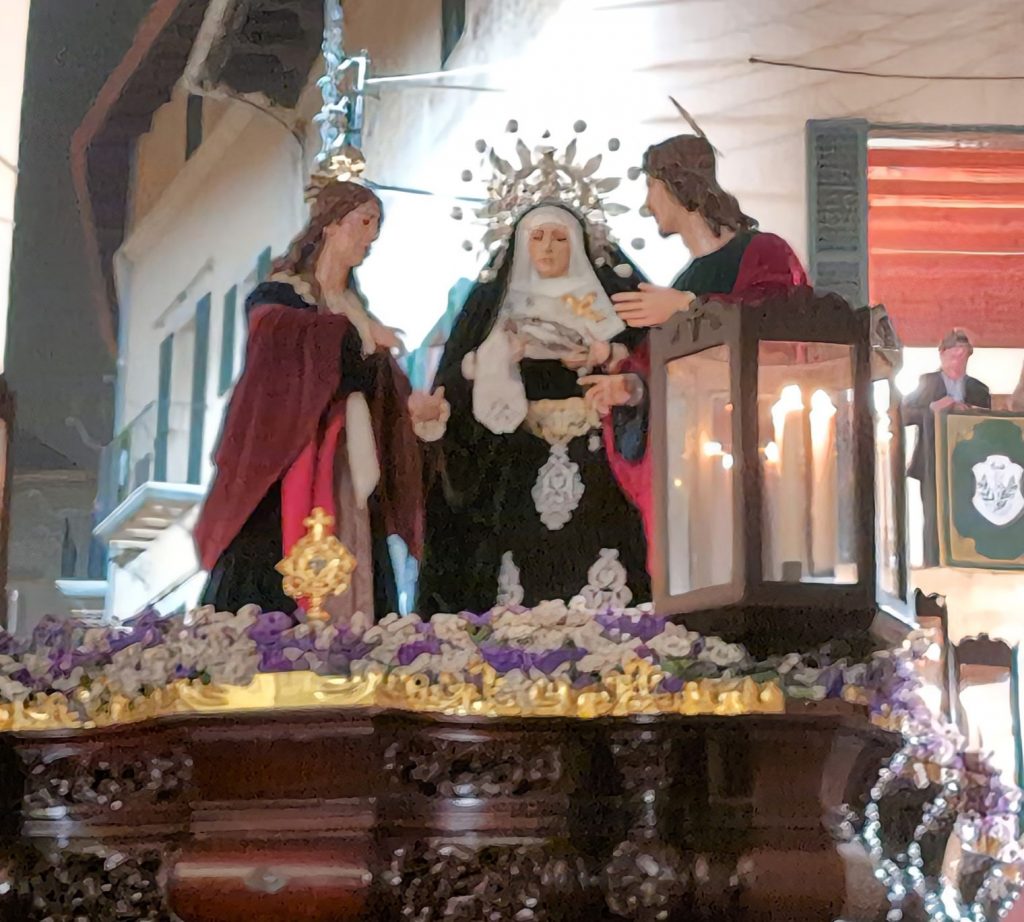
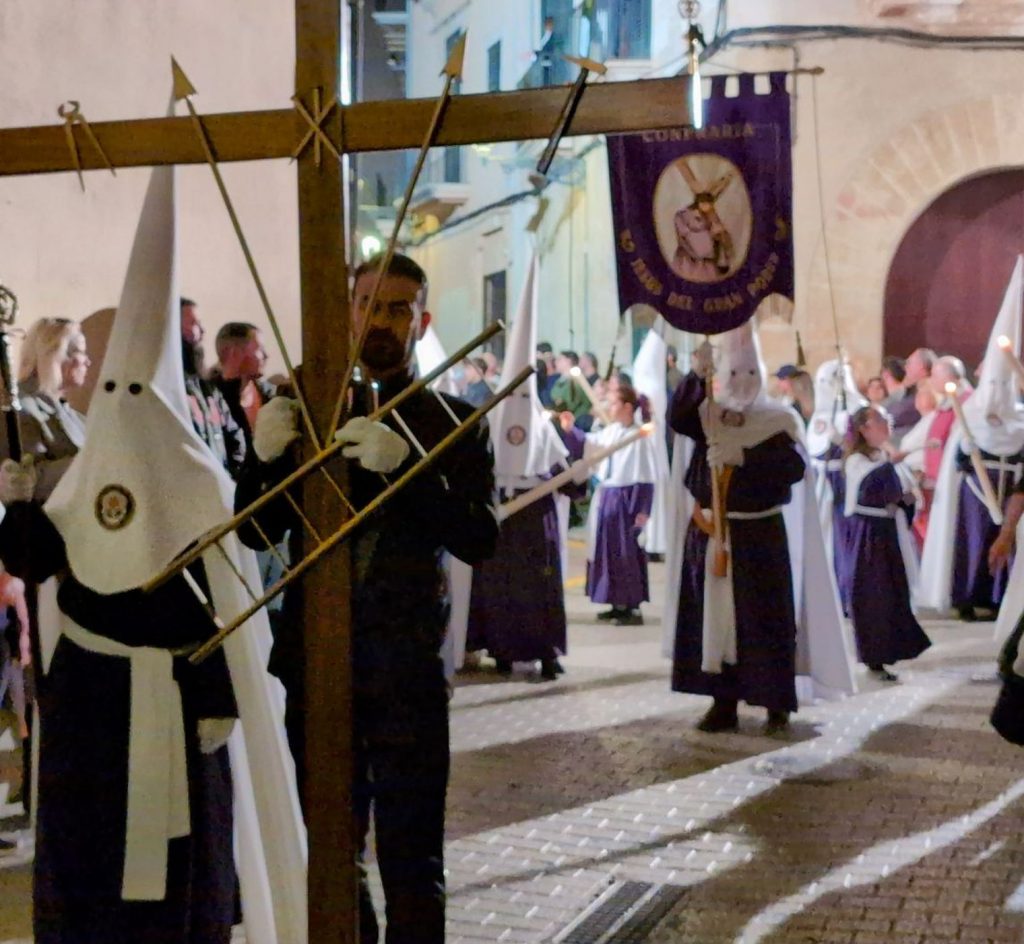
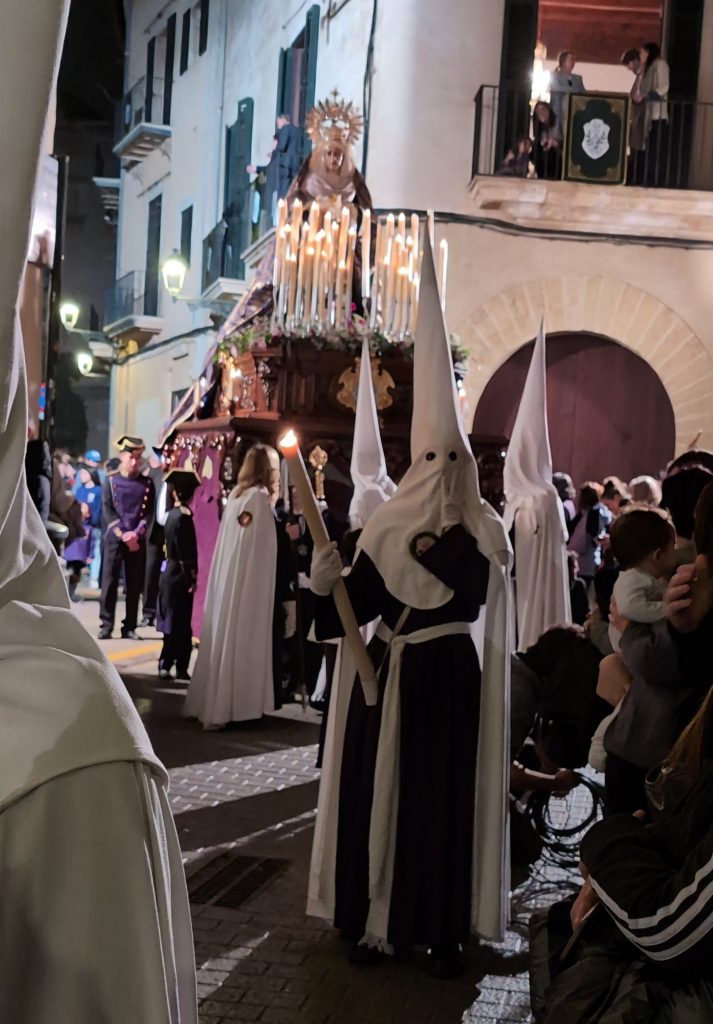
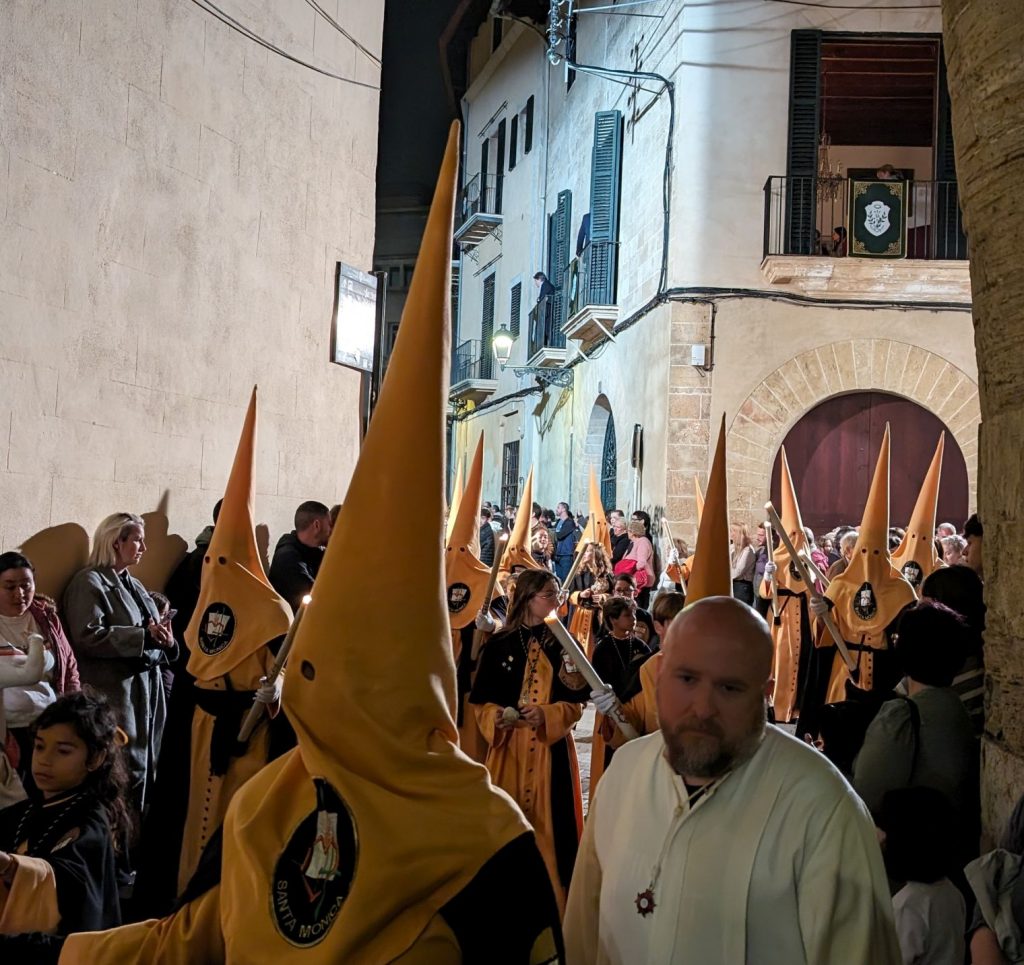
It was lovely walking back to Seahike in the dark. So peaceful and beautiful.
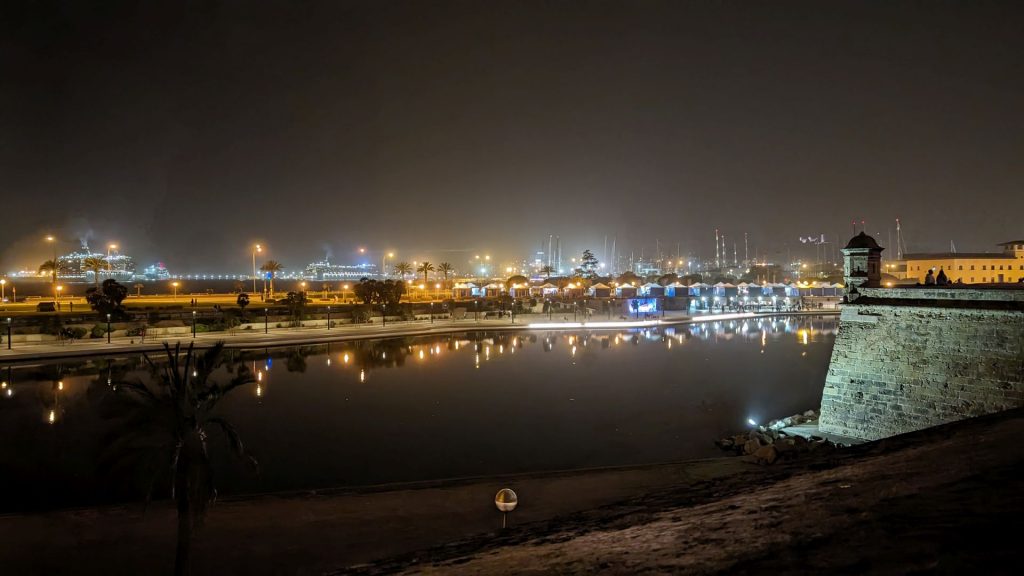

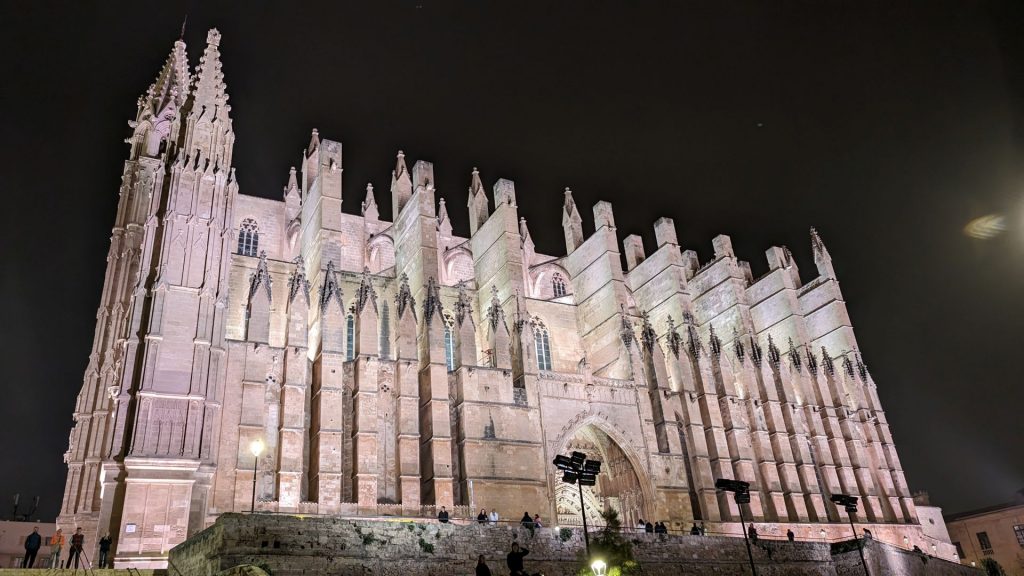
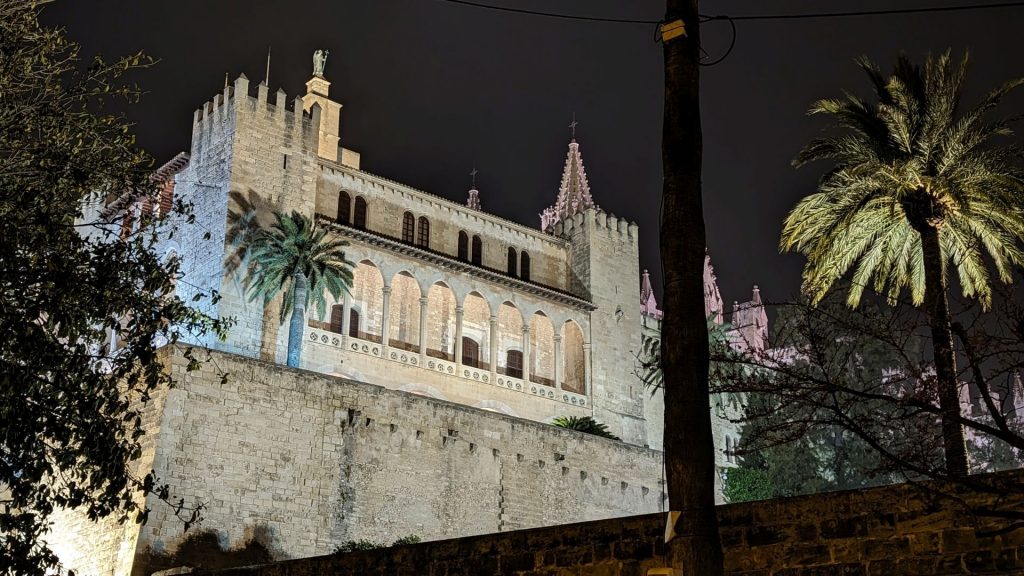
I will share the last few days of our time in Palma in the next post.
